2017 Ford Escape: What's It Like to Live With?
Read the latest updates in our long-term road test of the 2017 Ford Escape as our editors live with this car for a year.
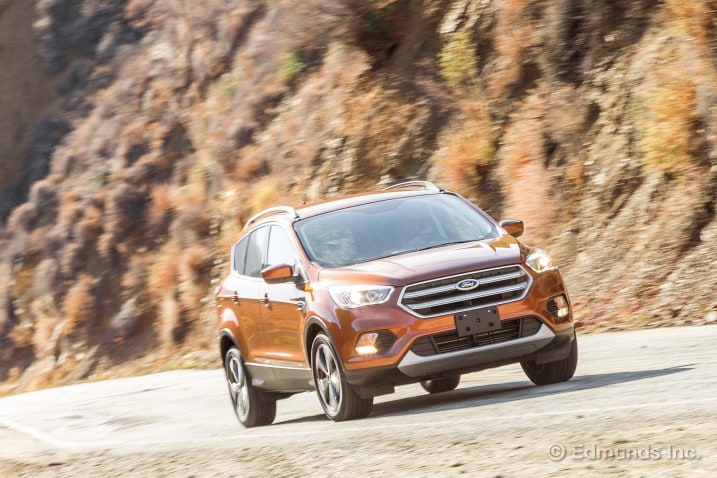
What do you want to know about?
- Introduction
- Monthly Update for November 2016
- Monthly Update for December 2016
- Monthly Update for January 2017
- Monthly Update for February 2017
- Performance Tested
- Monthly Update for March 2017
- Installing a Roof Box for Extra Storage
- Monthly Update for April 2017
- Monthly Update for May 2017
- Monthly Update for June 2017
- Monthly Update for July 2017
- Monthly Update for August 2017
- Monthly Update for September 2017
- Monthly Update for October 2017
- Wrap-Up
Introduction
What Did We Buy?
When the Ford Escape was first introduced for the 2001, the idea of the compact SUV hadn't really taken off yet. Today, compact SUVs such as the Escape often outsell their midsize-sedan stablemates thanks to efficient engines, elevated seating positions and abundant features.
For the past several years the Escape has been one of the top-selling vehicles in the category. That success didn't stop Ford from pushing ahead, however; it gave the Escape a minor update to assure it stays competitive. We liked the modest improvements, so we decided to add a midlevel Escape to our fleet to see just how well it stacks up to the competition.
What Options Does It Have?
The 2017 Escape comes standard with seating for five, a four-cylinder engine and a six-speed automatic transmission that sends power to the front wheels.
There are three trim levels. The base S trim comes with a 168-horsepower 2.5-liter engine only. In SE and Titanium trims, the Escape is available with a choice of front-wheel or all-wheel drive. Both the SE and the Titanium also offer the option of a new-for-2017 179-hp EcoBoost 1.5-liter or a higher-output 245-hp EcoBoost 2.0-liter engine.
We set our sights on the volume-selling SE with front-wheel drive. From there we wanted to try the more powerful 2.0-liter engine and add a few noteworthy options. Ideally, we were hoping to keep the MSRP under $30,000. We scoured Southern California for just the right model, but after coming up short, we ended up settling on an SE that met all of our criteria except for one — it was all-wheel-drive. It raised the price above our intended threshold but ultimately made our Escape a little more capable of handling some winter ski trips.
The Escape S has a starting MSRP of $23,600. Our step up to the SE raised that to $26,850. We spent another $1,295 for the 2.0-liter engine upgrade. Additional options on our car included a power liftgate ($495), Class II Trailer Tow Prep package ($495), a voice-activated and touchscreen navigation system ($795), 18-inch machined aluminum wheels ($595) and a cargo cover ($135). The total MSRP landed at $32,950.
We were able to negotiate a price of $31,646 before subtracting a $2,000 purchase incentive. So our total cost for our Escape was $29,646 before tax and title.
Why We Bought It
There's a reason why compact SUVs have become so popular. They're practical, easy to drive, reasonably priced, and available with most of the features shoppers are looking for these days. And, of course, sitting a little higher with a clear view of traffic ahead helps, too.
The Escape was one of the earliest entries in this category but slowly got overshadowed by new, more modern competitors over the years. The latest version looks as if it once again has just the right combination of performance, efficiency and features to measure up to any of the dozen or so vehicles in the class. We'll have plenty of time to try out the Escape's various upgrades during our yearlong test drive. Follow along on our long-term road test blog for all of our latest thoughts and impressions of this modern compact SUV.
Edmunds purchased this vehicle for the purpose of evaluation.
Monthly Update for November 2016
Where Did We Drive It?
Most notably, our long-term 2017 Ford Escape took its talents to Portland this month on a Thanksgiving road trip, with your humble narrator at the helm. It's about 1,950 miles if you stick to Interstate 5, but we detoured through Sonoma on the way up, so our total was closer to 2,100. The Escape also saw consistent commuting use, including a stay with Editor Dan Frio, who lives forever away in southern Orange County. All in all, it was a 3,300-mile month, give or take — a pace we're unlikely to maintain, though it would be neat if we did.
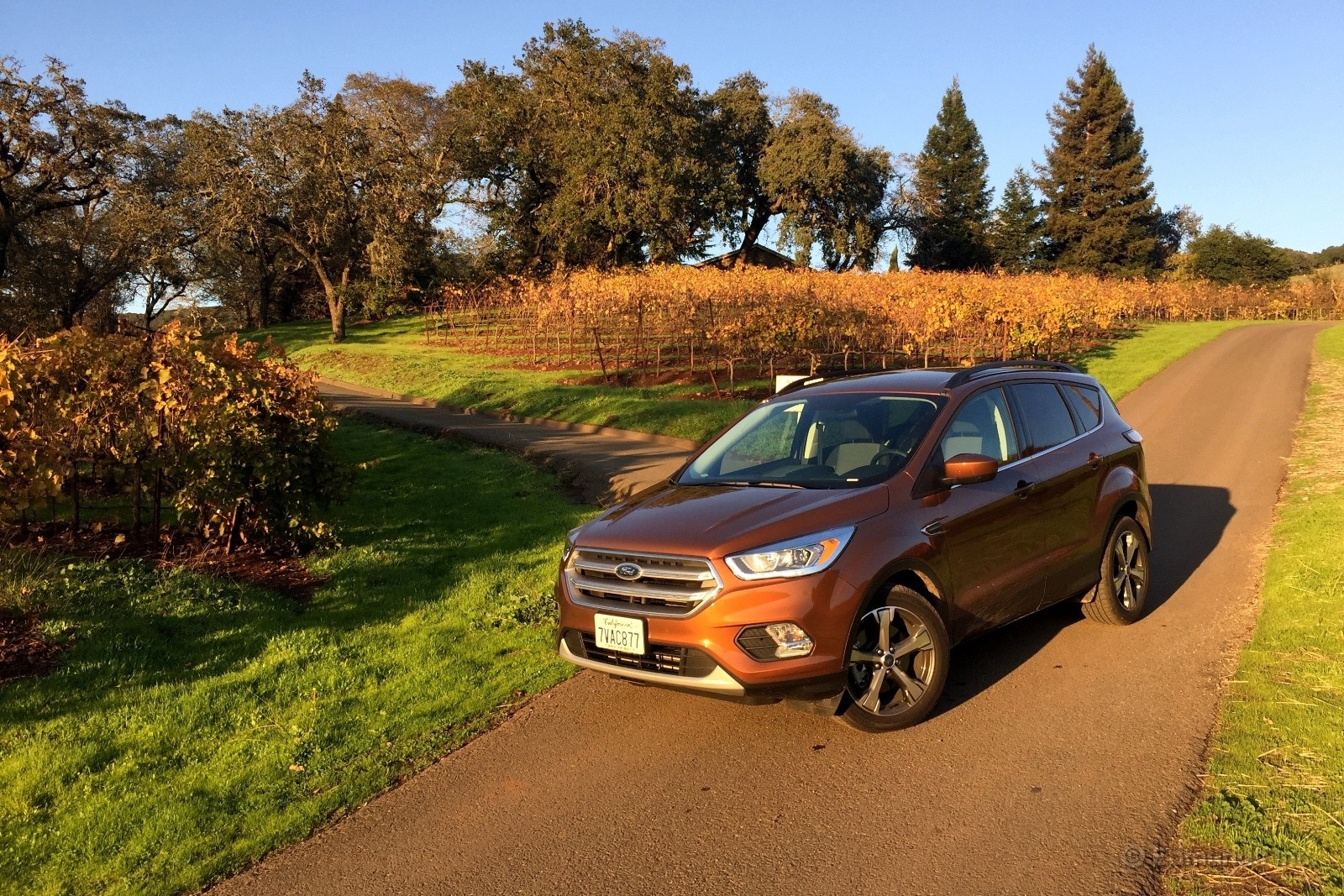
What Kind of Fuel Economy Did It Get?
I thought for sure I'd break Frio's records for mpg (25.2) and range (338.7 miles) on the Portland trip, but I failed pretty hard. My best full tank was 23.2 mpg, and I couldn't manage more than 310 miles between fills. Granted, I wasn't driving for efficiency, but I spent the vast majority of the trip on the freeway, typically with the cruise set between 70 and 75 mph. Will we ever achieve the 27 mpg EPA highway rating? The test is young, but the early returns aren't particularly encouraging.
Average lifetime mpg: 21.3 mpg
EPA mpg rating: 23 combined (20 city/27 highway)
Best fill mpg: 25.2
Best range: 338.7 miles
Current odometer: 6,228 miles
Maintenance and Upkeep
None.
Logbook Highlights
Performance
"I wouldn't go as far as to say you have to get the updated 2.0-liter engine in the Escape, but if it were my decision I would pay up for the privilege. I say privilege because this engine is incredibly smooth and powerful for a vehicle in this class. It makes getting on the highway a breeze, and the occasional pass around a slow-moving truck barely takes a modest squeeze of the pedal. It's a feeling you don't often get with many of the four-cylinder engines found in the Escape's competitors." — Ed Hellwig, Executive Editor
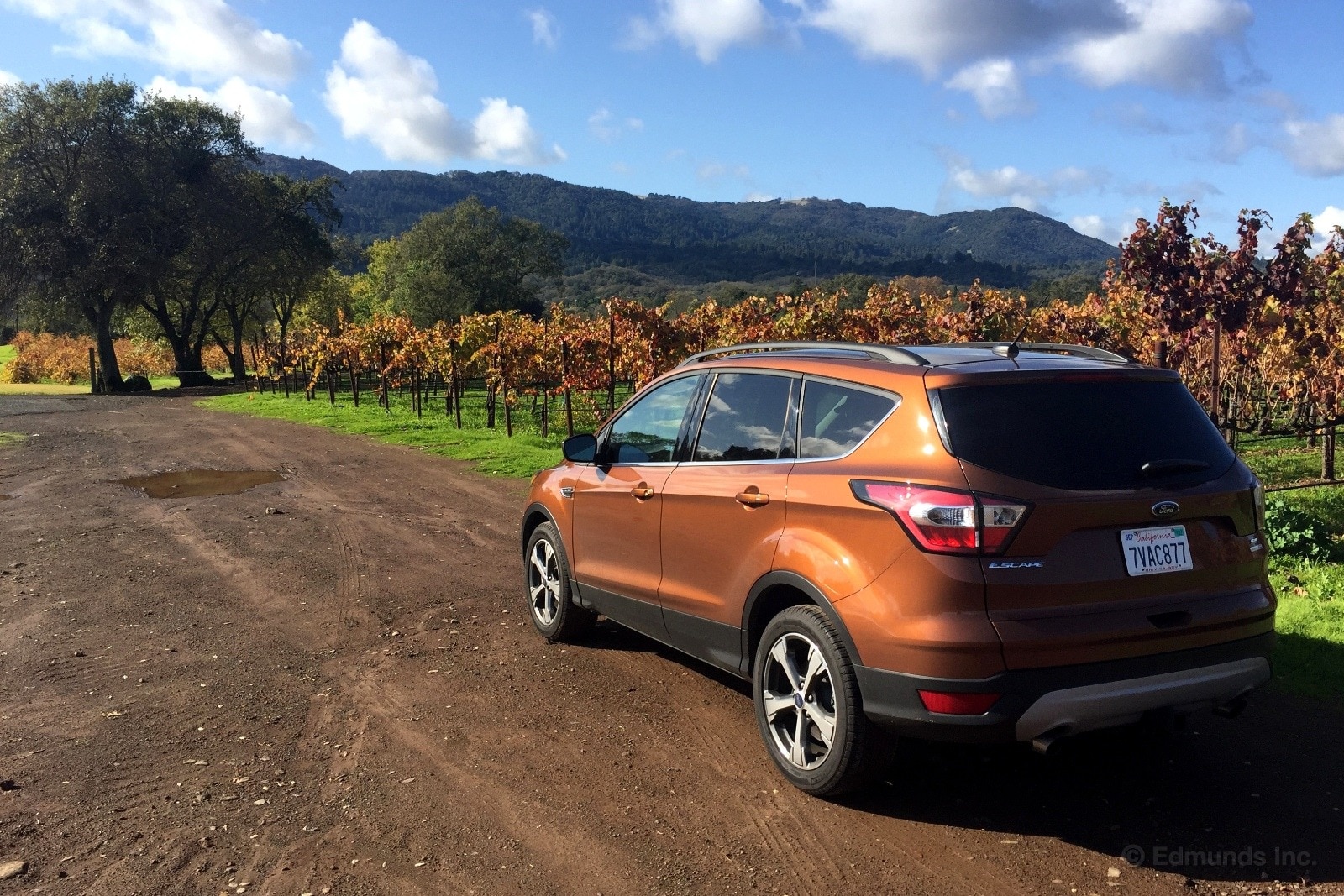
Cargo Space
"Was not expecting the Ford Escape to top my list as a replacement (or more likely, complement) for my 15-year-old Jeep Cherokee. But it has. One of the crucial tests it needed to pass: Would the longboard fit? It does. All 9 feet 2 inches of it. And there's room to spare if I someday wanted to add a more traditional 10-foot-something longboard length. Although I'd probably add a roof rack and typically strap the board up top, I like being able to stash the board inside for those occasional post-surf breakfast sessions when the car is parked out of sight. Or more realistically, when I'm too lazy to strap the board up top and just want to get to the beach." — Dan Frio, Vehicle Editor
Technology-Audio
"The satellite radio is proving spotty. Either we've got a bunk antenna or it's a quality flaw of the factory antenna, but it drops and reacquires signal way too often to be convenient or worth the money. It's not incessant, but it happens frequently and randomly, not just when passing under overpasses. Something to address with the dealer, surely, but I don't expect much luck." — Dan Frio

Miscellaneous
"I drove the Escape from Santa Monica to Portland for Thanksgiving, a few months after taking the 340i on a similar trip. I didn't expect the 245-horsepower Ford to compare particularly well to the, er, 320-horsepower Bimmer, and in at least one respect I was right: The former hit a wall around 23 mpg — call it 15 percent shy of the EPA highway rating — while the latter blew my mind with a 34.6-mpg tank. But otherwise, what a pleasant road-trip car this was. Quiet and comfortable with power to spare, both under the hood and via the three-prong outlet that kept my friend's laptop juiced up the whole way. Although the Escape is far from the newest rig in its class, it's easily one of the best, particularly now that the Sync 3 touchscreen has made MyFord Touch a distant memory. I generally don't like small crossovers, just not a fan, but I'm digging this one." — Josh Sadlier
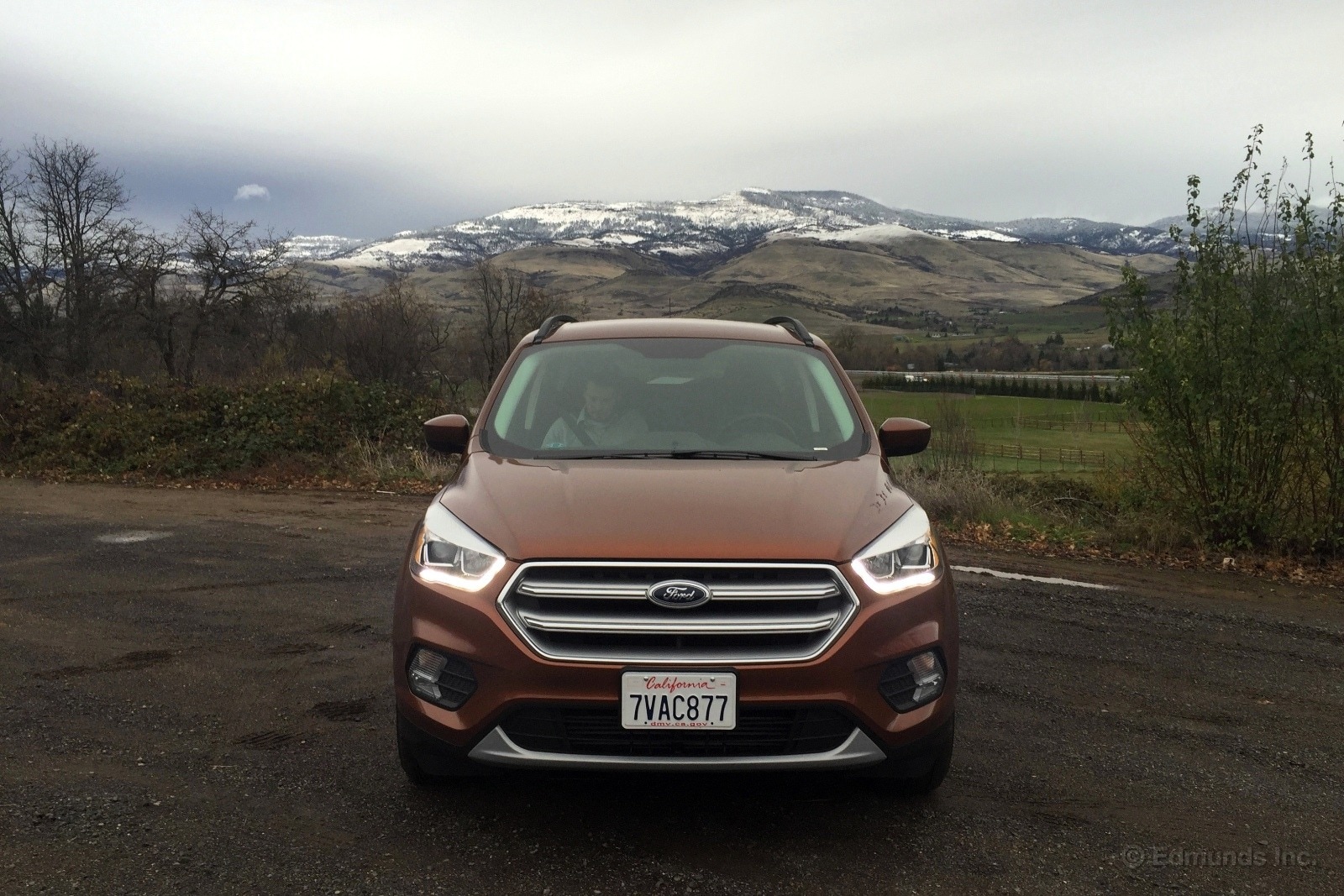
Monthly Update for December 2016
Where Did We Drive It?
With the holidays in full swing, our long-term 2017 Ford Escape didn't see much serious action. We used it for some commuting to and from the office but not much else. We put about 800 miles on the odometer, which is shy of our monthly goal, but we have nine months to close that gap. If prior long-term tests of crossover SUVs are any indication, we shouldn't have any problem making up the difference.
What Kind of Fuel Economy Did It Get?
Though it wasn't exactly a riveting month for the Escape, it did hit a new high for fuel economy. One of the Escape's four fill-ups this month worked out to 26.2 mpg, which is our first tank to be higher than the EPA's combined city/highway estimate of 25 mpg. Unfortunately, our Escape's lifetime average is still well below the city EPA estimate, and we've yet to meet the highway EPA estimate. Looks like a few light-footed road trips are in order. Here are the details after three months of driving.
Average lifetime mpg: 21.3 mpg
EPA mpg rating: 25 mpg combined (22 city/29 highway)
Best fill mpg: 26.6 mpg
Best range: 338.7 miles
Current odometer: 7,012 miles
Maintenance and Upkeep
Our Escape wasn't due for any scheduled maintenance this month.
Logbook Highlights
Performance
"Light steering and a small turning circle give the Escape great maneuverability. Generally speaking, this is one of the easiest cars to drive in our test garage. With its fold-flat second-row seat and boxy interior shape, it is also one of the most versatile." — Mike Schmidt, Senior Manager, Vehicle Testing
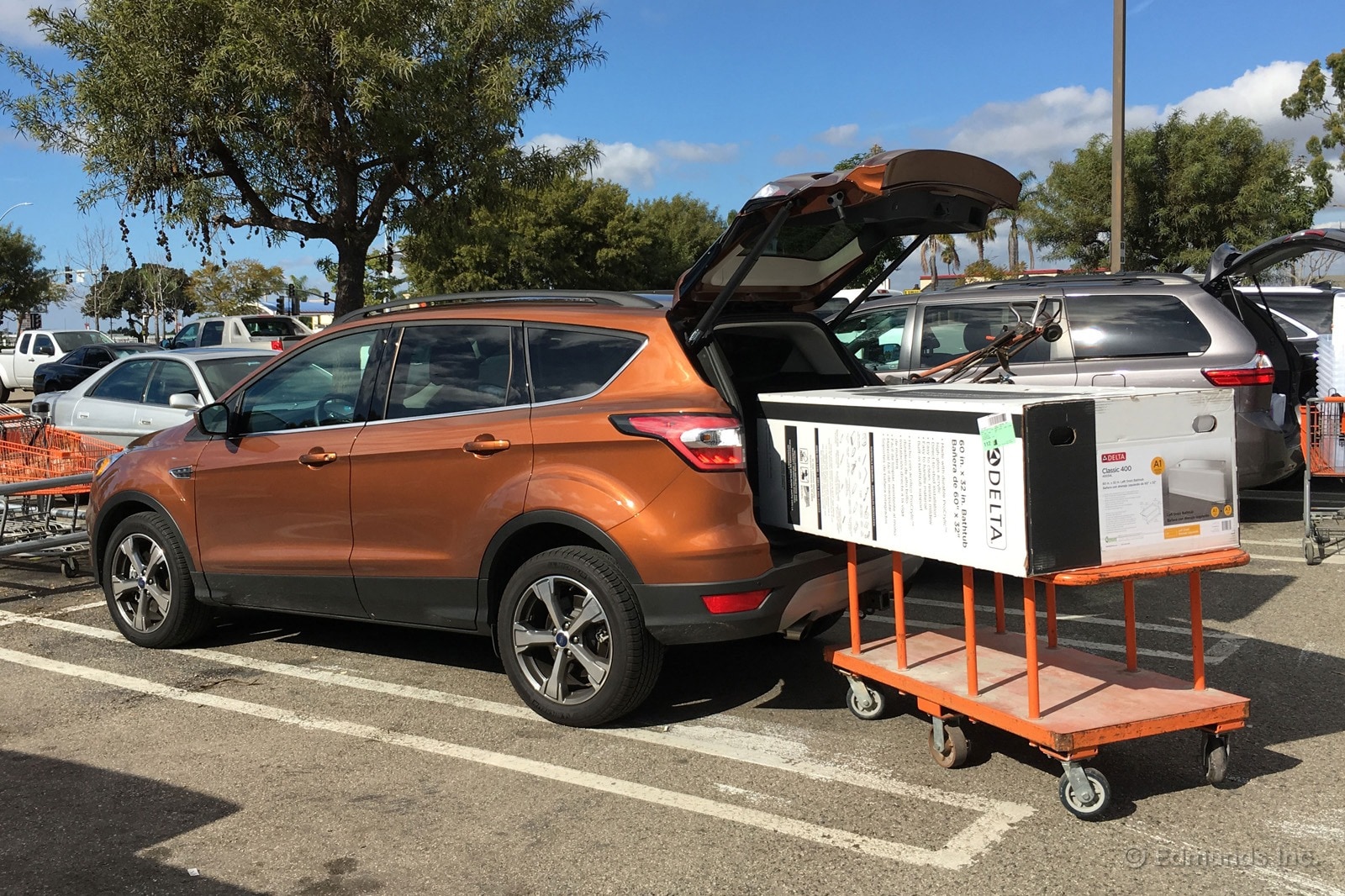
Cargo
"I had doubts that our newly purchased bathtub would fit into the Escape. There wasn't a lot of wiggle room front to back or side to side. But I needed only drop the second row seat flat and slide it in." — Mike Schmidt
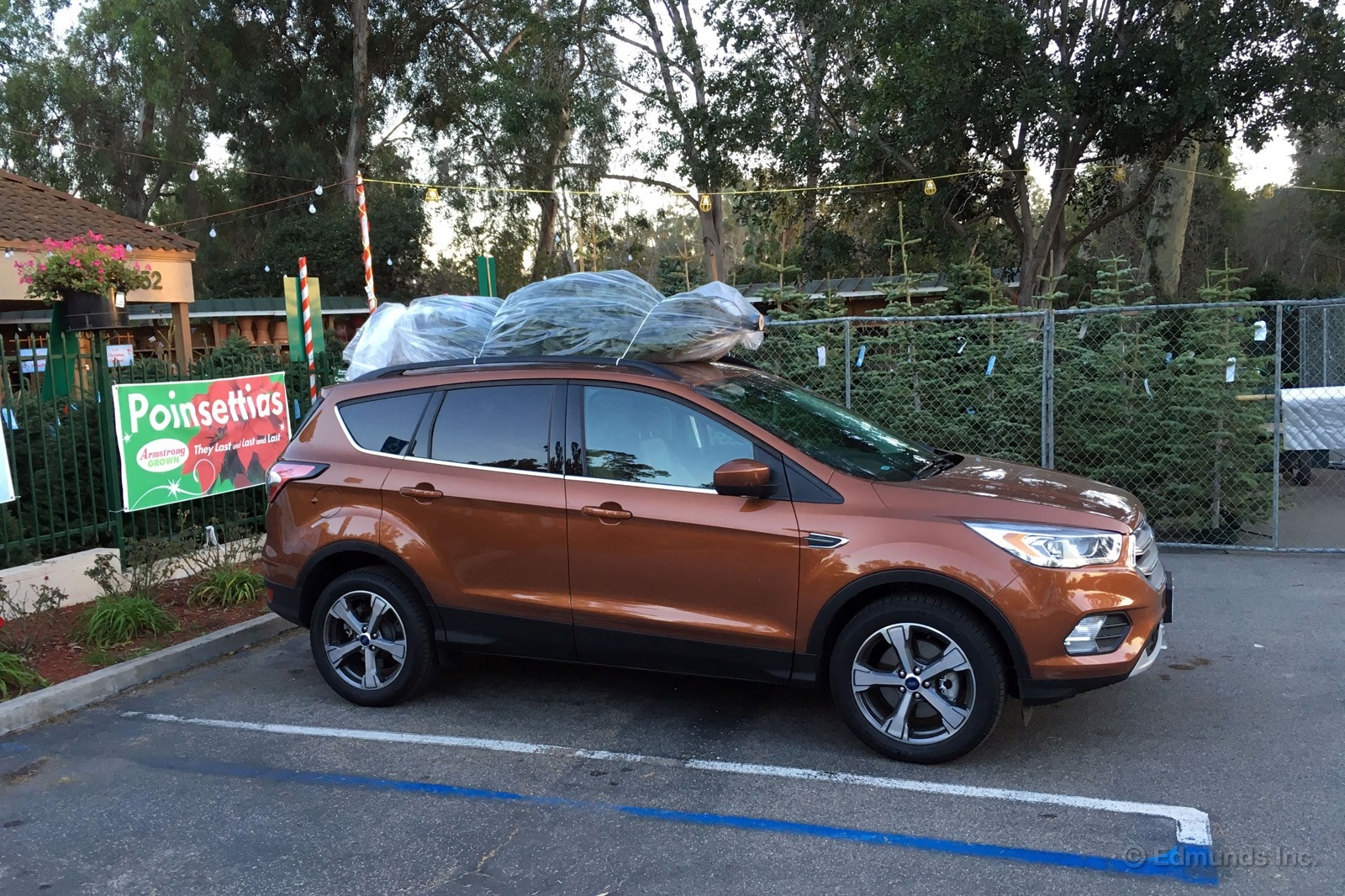
Miscellaneous
"It was more difficult to get my family to agree on a Christmas tree than it was to tie it to the roof of the Escape. The side rails made it quick and easy." — Mike Schmidt
Monthly Update for January 2017
Where Did We Drive It?
Our long-term 2017 Ford Escape covered some 1,300 miles during January, easily eclipsing its rather tepid December total but falling well short of its monster November tally.
It traveled widely within the Los Angeles basin, serving as a surfboard transporter, a cargo hauler and a daily runabout for an editor with an especially long commute (southern Orange County to Santa Monica — ugh!).
What Kind of Fuel Economy Did It Get?
The Escape averaged 21.7 mpg over the course of the month, which was enough to move its lifetime average up one-tenth to 21.4 mpg. This is well below its EPA combined estimate, and even a shade below its city number.
Turns out turbo four-cylinders have torque, and torque is fun, and when you indulge in the fun, fuel economy suffers.
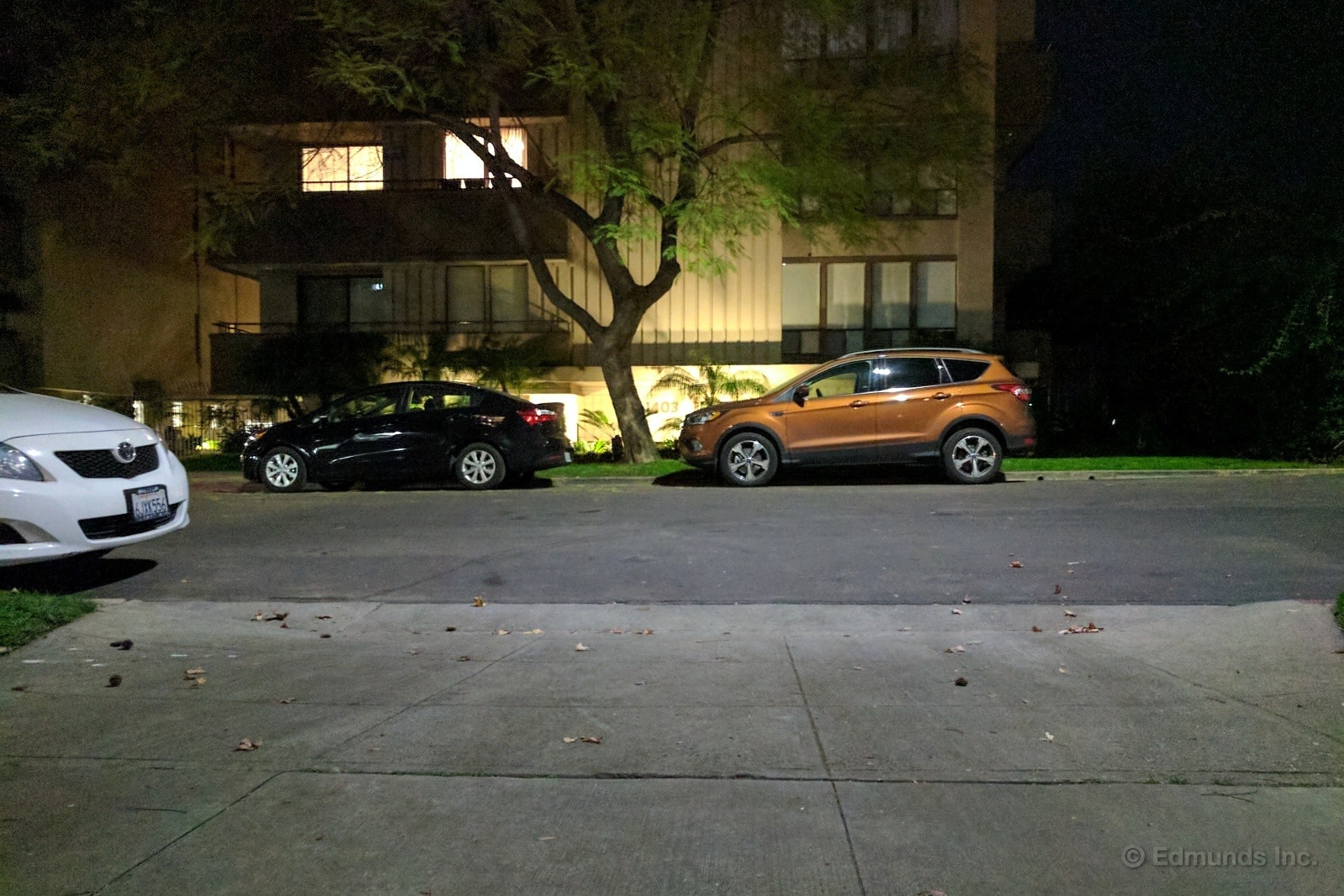
Of course, not all turbo-fours fall prey to this phenomenon to the same degree. Some engines employ more fuel enrichment when you dip the throttle pedal than do others. Seems the EcoBoost range is particularly sensitive to those times when you're not driving it exactly like an EPA driving cycle.
Average lifetime mpg: 21.4
EPA mpg rating: 25 combined (22 city/29 highway)
Best fill mpg: 29.3
Best range: 338.7 miles
Current odometer: 8,147 miles
Maintenance and Upkeep
None.
Logbook Highlights
Performance
"If I could drive through a slalom blindfolded, not knowing what I was driving, I would tell you this is a Focus. The steering feel (not to mention the wheel itself) is a dead giveaway. It's the way the front end moves when you crank the wheel — it's not just the tires but the entire front half of the car that seems to respond to your inputs. I like it." — Kurt Niebuhr, Photo Editor
Interior
"I really like the simplicity of this Escape. Everything you need is at your fingertips and works as expected. From the climate controls to the shifter to the seat adjustments, it's all intuitively designed. Of course, that's how it should be in a vehicle like this, but sometimes the designers get too cute and make things a little more difficult than necessary. With this Escape, you just get in and go." — Ed Hellwig, Executive Editor
"It's got some cheap bits. The plastic hood around the center Sync screen feels hard and flimsy, and it's also easy to lift up with one hand. The rear passenger grab handles have pronounced unfinished seams. And at various times I heard minor squeaks and rattles from the driver's door and the center dash. What's par for the course in a 14-year-old car should not exist at all in a car less than a year old." — Kurt Niebuhr
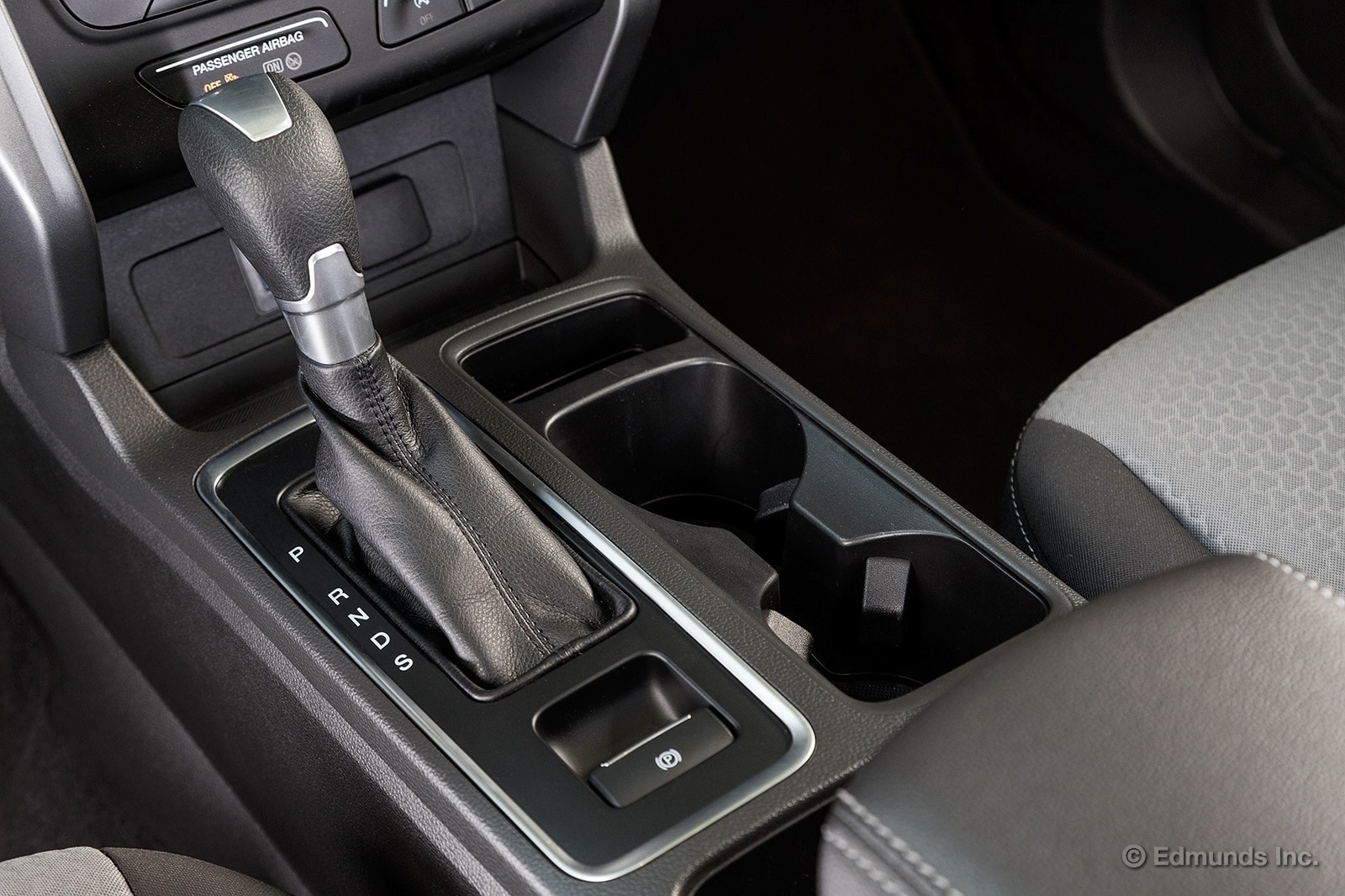
"I am very pleased with the amount of small-item storage offered by our Ford Escape. In addition to two centrally located cupholders, which I often enlist to house the contents of my pockets, there are two adjacent cubbies. Ford also adds a six-pack-size center console and reasonably deep front door pockets to the list. I am rarely without a place to store my clutter." — Mike Schmidt, Vehicle Testing Manager
Comfort
"The cloth-covered seats in our Escape don't look like much, but spend an hour or two behind the wheel and you'll like them more than you expected. At least I do after several long commutes. They have a tight, well-padded feel that holds up over the long haul. They're not sport seats by any means; they just deliver the right amount of support right where it's needed most. I would have no trouble sticking with this setup even if I could afford a higher trim. They're certainly worth a try for anyone looking at an Escape; you might be surprised." — Ed Hellwig
Technology-Audio
"The more I use the Escape's generally slick Sync 3 infotainment interface, the harder it is for me to imagine buying a used Ford with MyFord Touch. I really liked our 2015 Mustang, but it was stuck with MFT for that first year, and I think that would be a deal-breaker. Although Ford improved MFT incrementally over time, the system never achieved the intuitive touchscreen friendliness that we expect today. Sync 3 is what MFT should have been. It's a strong argument for buying a newer Ford instead." — Josh Sadlier, Content Strategist
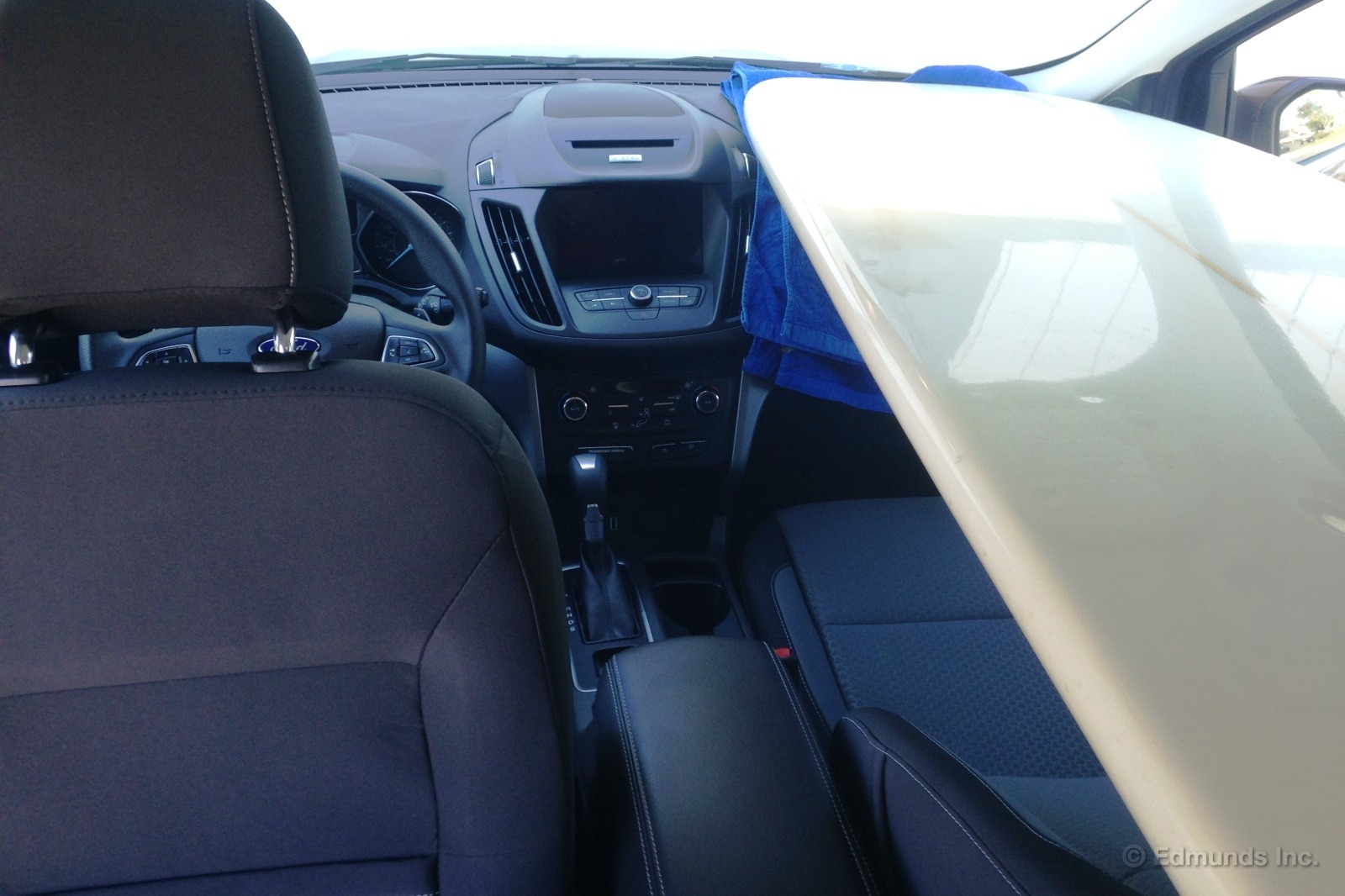
Monthly Update for February 2017
Where Did We Drive It?
It was a relatively busy month for our long-term 2017 Ford Escape. On top of its typical L.A. duties, the Escape had some extra cargo strapped to its freshly installed roof rack before hitting the road for Mammoth Mountain. We added a grand total of about 1,600 miles during the month, which left us just shy of the 10,000-mile midpoint of the test — a month ahead of schedule.
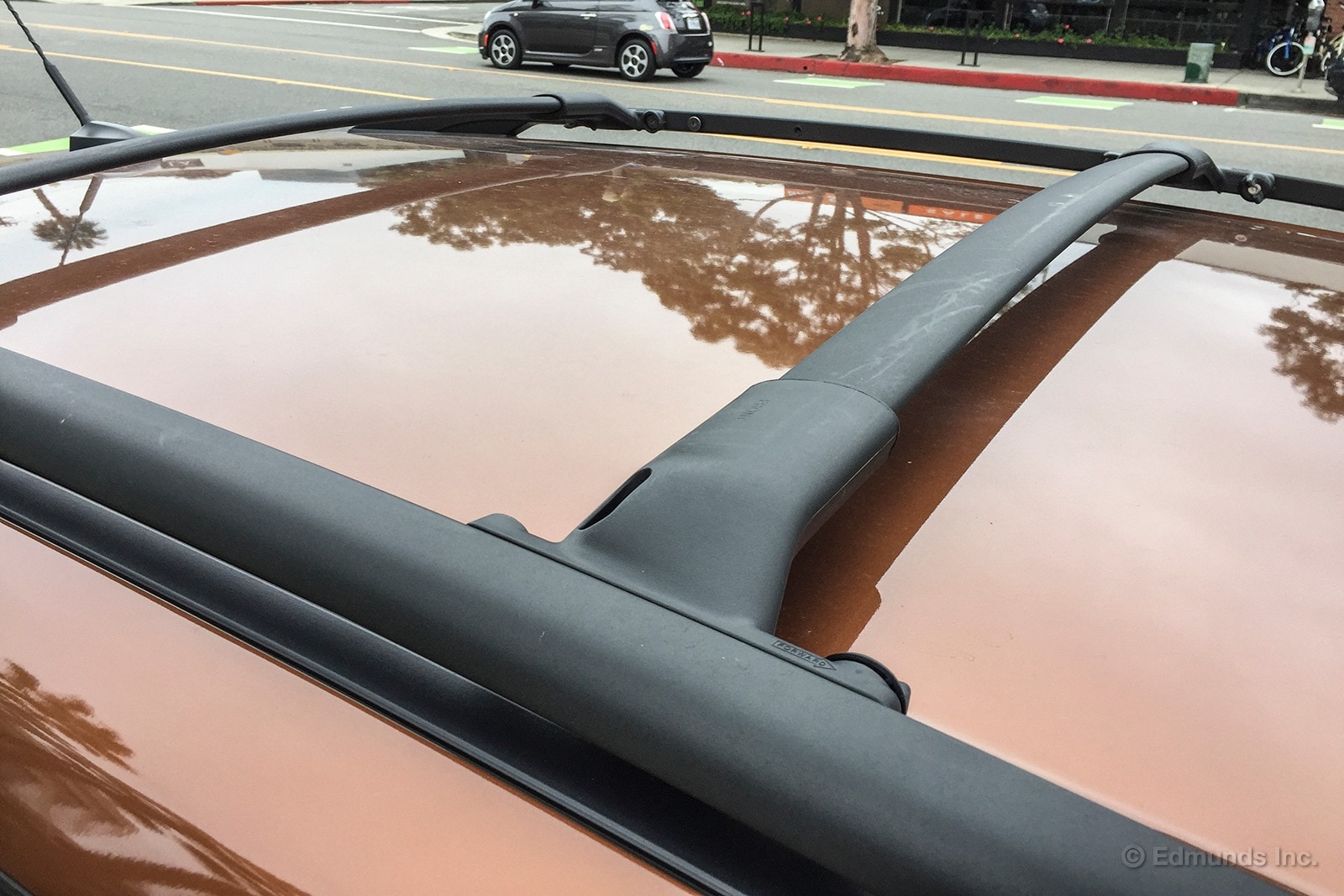
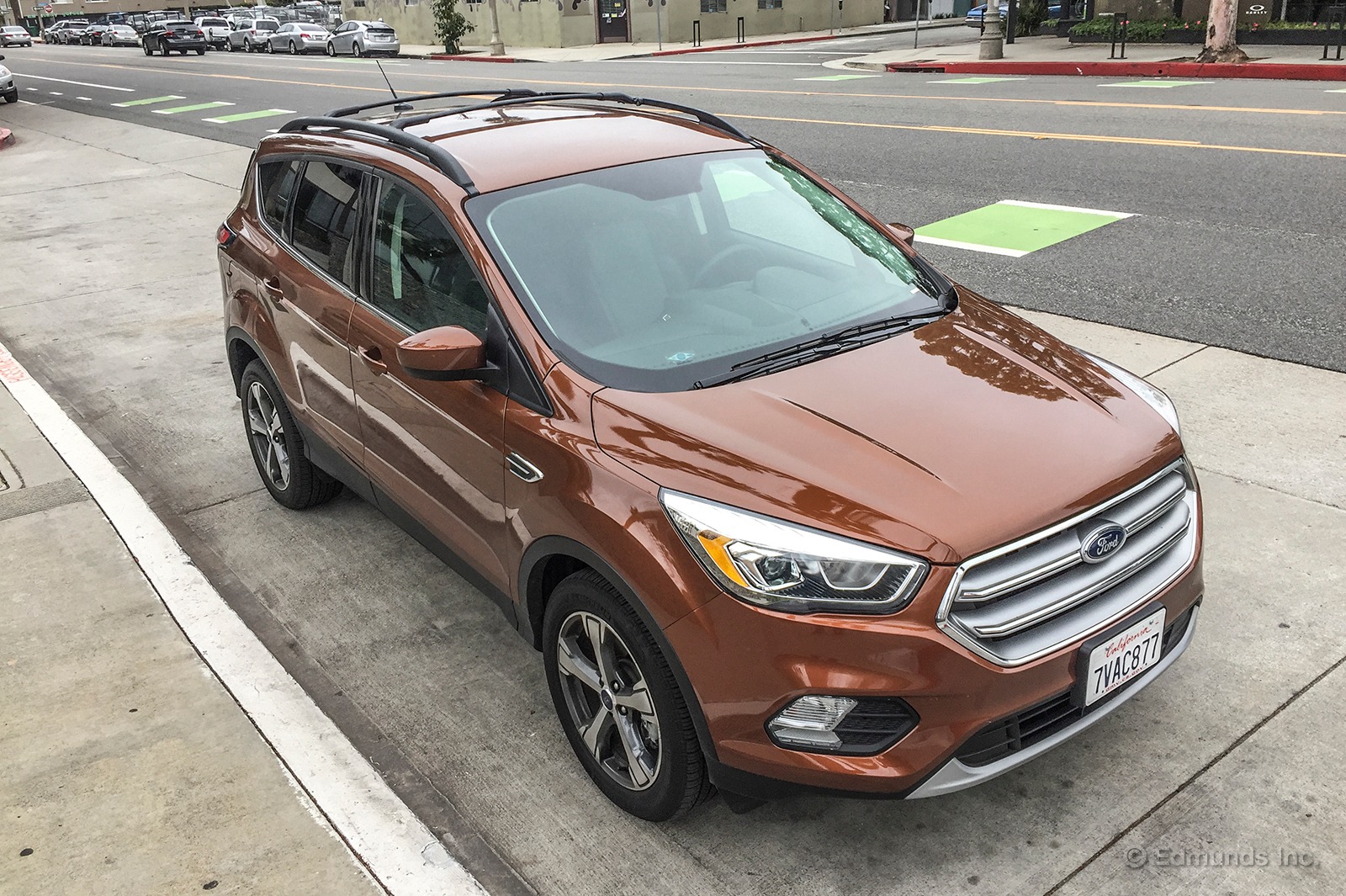
What Kind of Fuel Economy Did It Get?
The Escape's efficiency here has been underwhelming so far. This month it used roughly 86 gallons of 87 octane for an average of 18.5 mpg. That brought its lifetime average down from 21.4 mpg to 20.8 mpg, which is 17 percent lower than the combined EPA estimate of 25 mpg.
Also worth noting is the Escape's relatively limited real-world range in our hands. We've only notched six tanks of 300 miles or more, with our best tank stuck on 338.7 miles since last fall. The tank itself holds 15.7 gallons, so the math says a 400-mile run is within reach. A light-footed road trip is clearly in order to see if we can set a more respectable record.
Average lifetime mpg: 20.8
EPA mpg rating: 25 combined (22 city/29 highway)
Best fill mpg: 29.3
Best range: 338.7 miles
Current odometer: 9,730 miles
Maintenance and Upkeep
None.
Logbook Highlights
Cargo Space
"I can see why compact SUVs are becoming the go-to vehicle for families. Our Escape has all the space you need 90 percent of the time. Whether you're hauling people or cargo, it has just enough room to squeeze it all in. Plus, when you're running errands and navigating parking lots, its smaller size makes it far easier to maneuver into tight spots and around sharp turns. As nice as it is to have a third row sometimes, the larger dimensions that come along with it can be a pain." — Ed Hellwig, Senior Editor
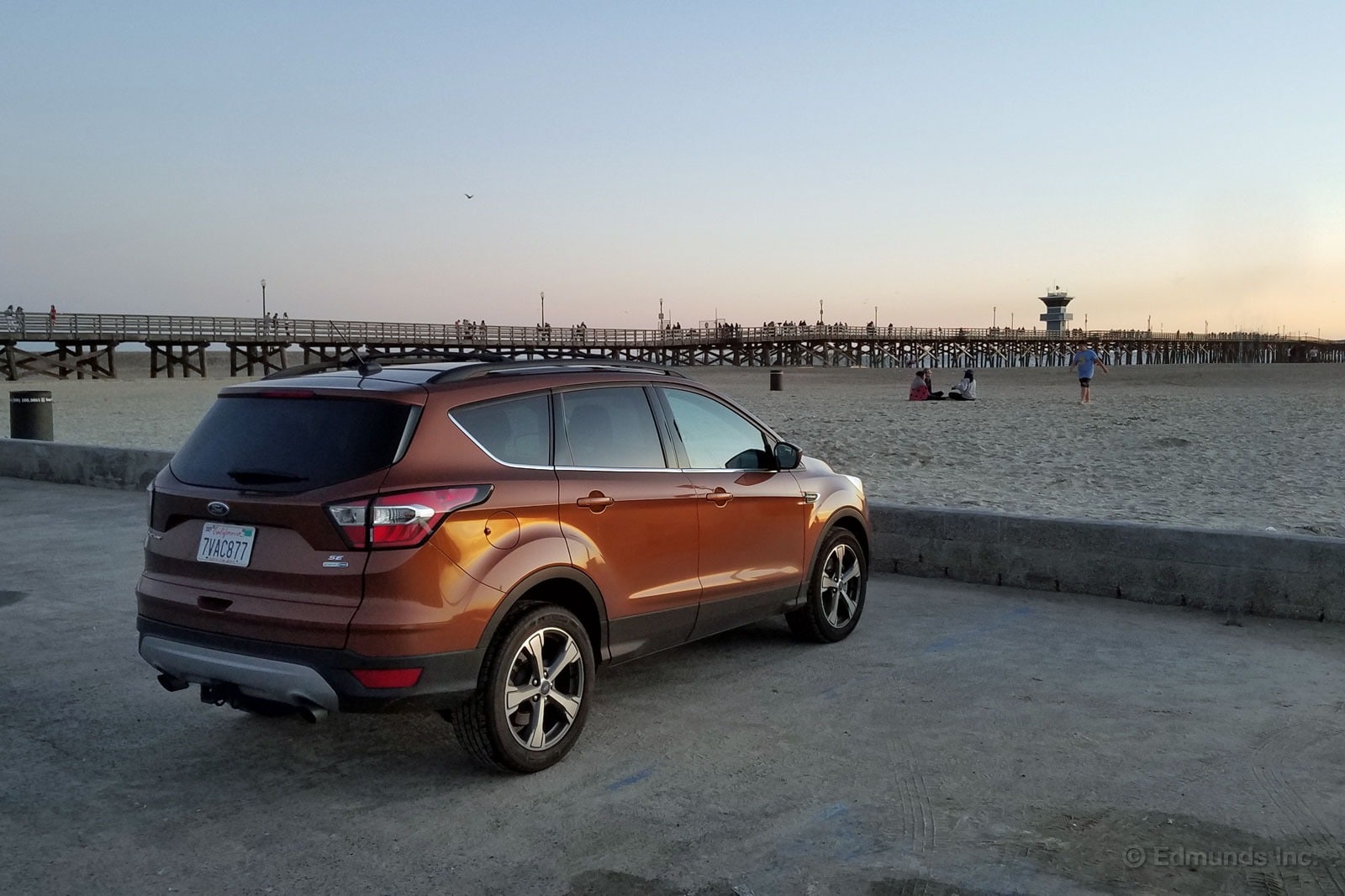
Interior
"Recommend upgrading to a trim level that has a leather-wrapped steering wheel. Ours has a vinyl covering that feels very cheap. Almost sticky. However, the shape of the rim itself is outstanding, with contours right where your hands need them." — Jay Kavanagh, Engineering Editor
Comfort
"These seats are excellent. Initial comfort is good, bolstering is respectable for a vehicle in this class, and I love the material. Everyone is pushing faux leather into the market that looks good but doesn't feel nearly as nice. It's so refreshing to have a quality cloth seat to sit on." — Travis Langness, Automotive Editor
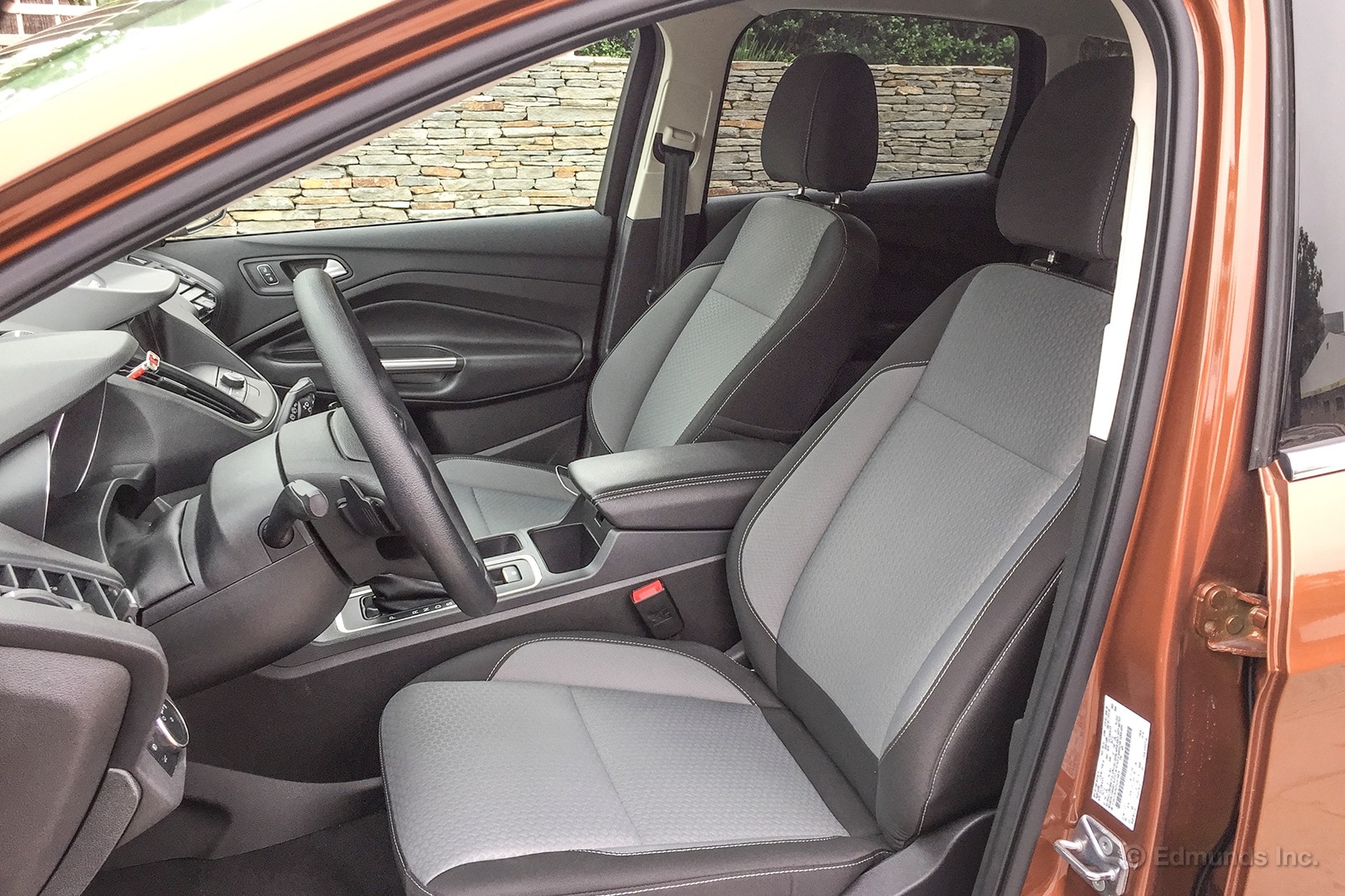

The 2017 Ford Escape received several improvements for this model year, but most of them are cosmetic upgrades and technology enhancements that don't translate into improved performance on the road. We took it to the track anyway, however, since we did go for the optional turbocharged 2.0-liter engine that received a slight power bump this year.
For the record, it only increased from 240 to 245 horsepower and from 270 to 275 lb-ft of torque. Not huge gains, but we know we liked how the engine felt on the road. With that in mind, we decided to take to the track and see what the numbers said.
Vehicle: 2017 Ford Escape SE 2.0L EcoBoost
Odometer: 8,152
Date: January 31, 2017
Driver: Calvin Kim
Price: $32,950
Specifications:
Drive type: all-wheel drive
Transmission type: automatic
Engine type: turbocharged conventional gasoline inline four-cylinder
Displacement: 2,000 cc/122 cu-in
Redline: 6,200 rpm
Horsepower: 245 hp @ 5,500 rpm
Torque: 275 lb-ft @ 3,000 rpm
Brake type (front): one-piece ventilated discs with single-piston sliding calipers
Brake type (rear): one-piece solid discs with single-piston sliding calipers
Suspension type (front): independent MacPherson struts with 24 mm solid stabilizer bar
Suspension type (rear): Control Blade with 18 mm solid stabilizer bar
Tire size (front): 235/50 R18 97V
Tire size (rear): 235/50 R18 97V
Tire brand: Michelin
Tire model: Latitude Tour HP
Tire type: regular
Test Results:
Acceleration:
0-30 mph: 2.3 seconds (with TC on: 2.7 seconds)
0-45 mph: 4.3 seconds (with TC on: 4.7 seconds)
0-60 mph: 7.1 seconds (with TC on: 7.5 seconds)
0-60 mph with 1-ft rollout: 6.8 seconds (with TC on: 7.0 seconds)
0-75 mph: 11.0 seconds (with TC on: 11.1 seconds)
1/4-mile: 15.6 seconds @ 85.8 mph (with TC on: 15.9 seconds @ 86.9 mph)
Braking:
30-0 mph: 29 feet
60-0 mph: 116 feet
Handling:
Skidpad lateral acceleration: 0.84 g (0.83 g w/ ESC on)
RPM @ 70 mph: 2,000
Acceleration comments:
The Escape is surprisingly agile off line, and it doesn't take a lot of button-pushing to get it to launch quickly. Turn off traction control and place the shifter in Sport. Lay on the brake with your left foot, and rev the engine till the tach hits 2,500 rpm. Then as you continue to quickly roll on the throttle, release the brakes. You'll be met with a surge of turbo-boosted acceleration, just a whiff of wheelspin and mild torque steer through the steering wheel.
Braking comments:
The Escape surprises in the braking department. There's relatively mild pedal effort with moderate pedal travel and minimal feedback of what the brakes are doing through the steering wheel and pedals. And as befits a compact crossover, there's only moderate brake dive and minimal ABS pump noise and vibration. The Escape is stable and stays straight under panic braking.
Handling comments:
As a cute ute, there's no expectations for the Escape to "feel good" through the skidpad. Yet when you turn off traction control, put it in Sport mode and lock the transmission in second gear, the Escape is surprisingly lively and responsive to throttle and steering input. Although it's very forgiving and communicative, you have to stay far in front of what the car is actually doing due to sluggish engine response. There's minimal inside wheelspin, as the undefeatable traction control system was still inputting many subtle stability control interventions.
Monthly Update for March 2017
Where Did We Drive It?
March was one of the lowest-mileage months on record for our 2017 Ford Escape. Though we added only 1,248 miles to the odometer, we pushed the Escape past the 10,000-mile mark in its sixth month in our fleet. Hitting the halfway point was met with little fanfare (Magrath only buys cakes at the 15K milestone), although we did treat the Escape to a patch when we found a screw lodged in the right rear tire.
What Kind of Fuel Economy Did It Get?
The Escape spent most of March puttering around town, which predictably dragged down its overall fuel economy. Over the course of 1,248 miles, we consumed 67.634 gallons of gas for an average of 18.45 mpg (amazingly, within 0.01 mpg of last month's average of 18.46. You can't teach that kind of consistency, folks). Overall fuel economy dipped to 20.5 mpg from 20.8.
Average lifetime mpg: 20.5
EPA mpg rating: 25 combined (22 city/29 highway)
Best fill mpg: 29.3
Best range: 338.7 miles
Current odometer: 10,977 miles
Maintenance and Upkeep
"We started up our Ford Escape after it had been parked for a couple days to find a TPMS warning light. After a quick inspection, we found a screw in the rear passenger-side tire. Our late-afternoon discovery necessitated a trip to a local Just Tires shop because of its late closing time. The cost was about 30 minutes of our time and 34.73 of our dollars." — Michael Massey, Vehicle Testing Assistant
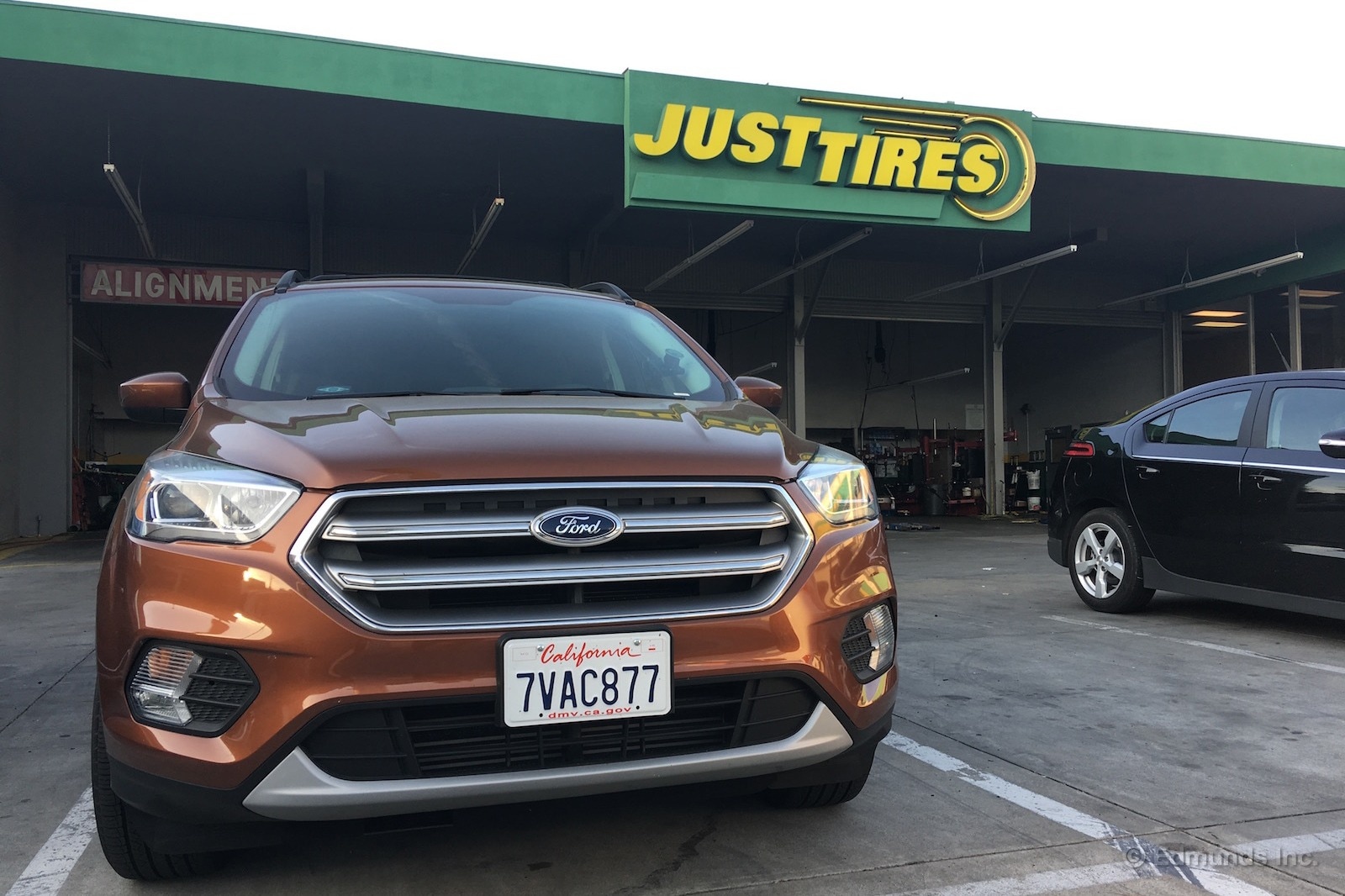
Logbook Highlights
Maintenance
"There's an odd sound coming from the chassis and I can't put a finger on it. I noticed it initially a few weeks ago but wasn't sure it was specific to the car. Then this morning, as I was accelerating on a freeway on-ramp, I heard it again. It's a low, hollow noise from the chassis that almost sounds like something is hitting or rubbing the inner wheelwell. It doesn't happen consistently enough to pinpoint, but it has happened enough times that I know something abnormal is going on. A quick visual check didn't produce any clues, so I guess I'll wait and see if anyone notices before we bother taking it into the dealer." — Ed Hellwig, Senior Editor
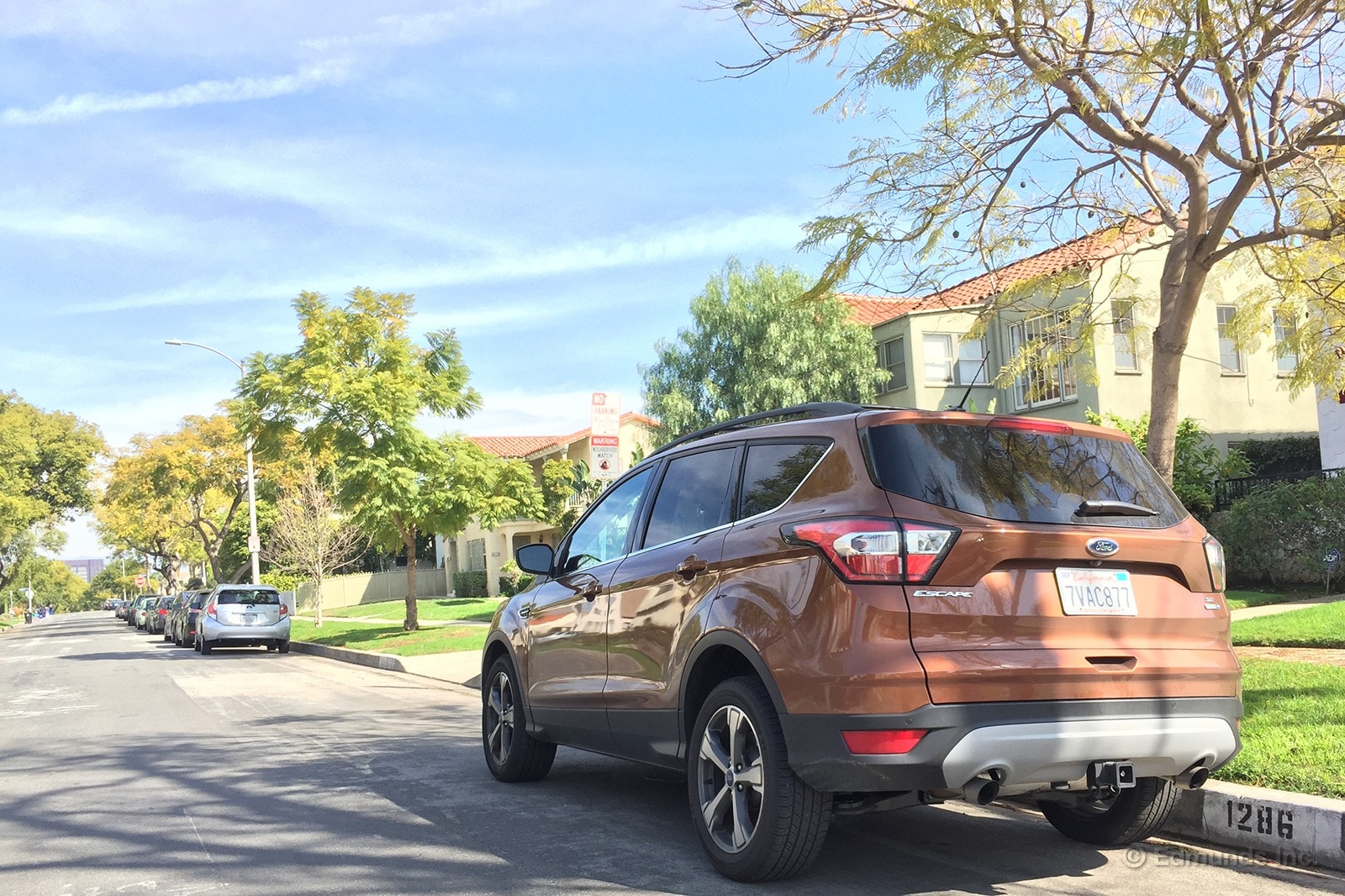
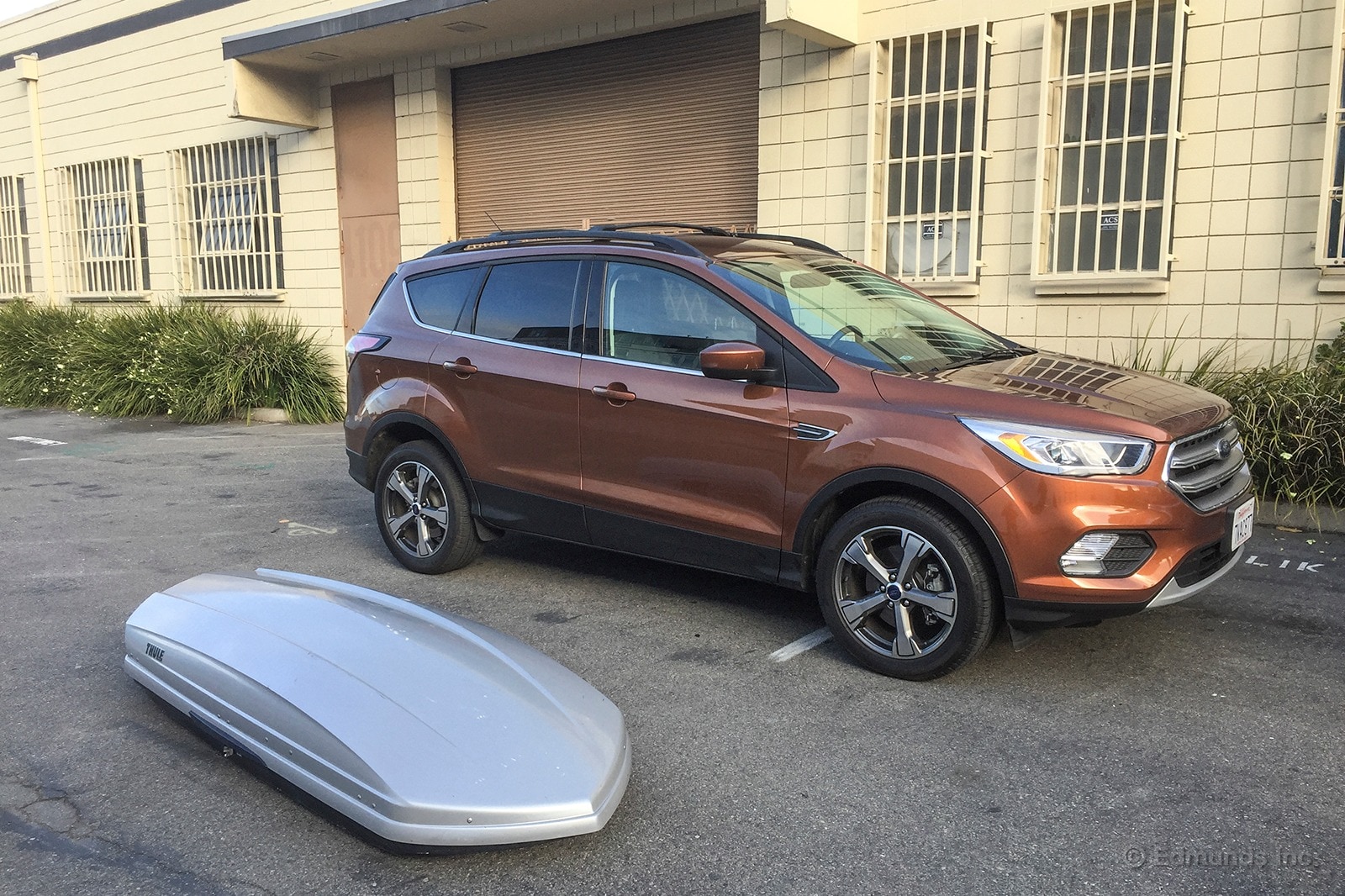
I recently took our long-term 2017 Ford Escape on a backpacking trip to the local mountains. I knew ahead of time that space would be limited. Three human passengers, plus a big dog lying across the backseat, meant the cabin would be full. On top of that, we would have three giant internal-frame backpacks and the gear and food required for a weekend of trekking through the woods. More space was needed, so I decided to mount a Thule roof box that we had used previously on a different long-term SUV.
Installing the box was a pretty simple process thanks to the already installed roof rack, with just a few positioning adjustments required. Once the roof box's clamping mechanisms were in place, I tightened the four knobs and it was ready to go.
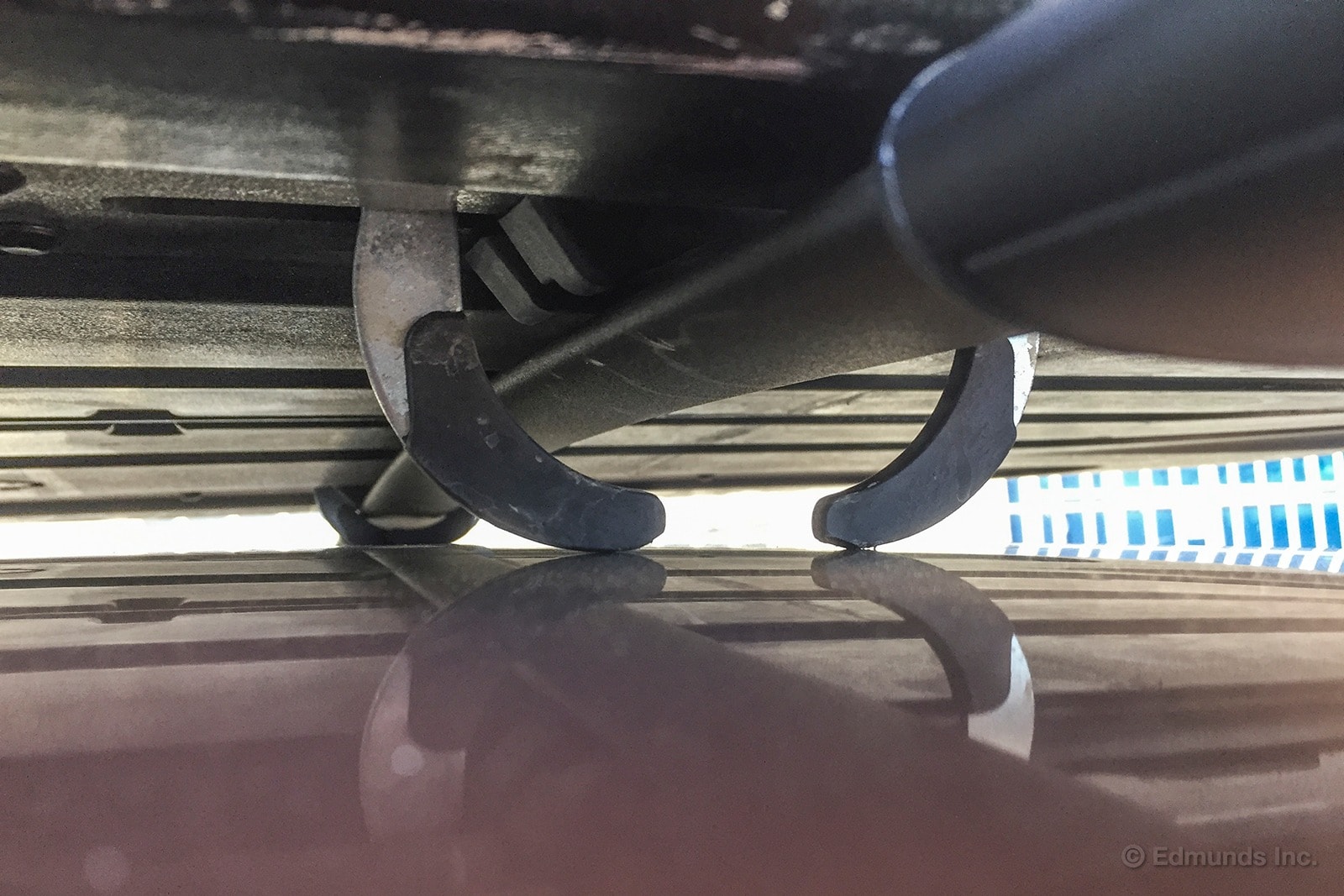
At freeway speeds, the light plastic box vibrated a little, but it didn't change location relative to the roof rack. As expected, you could hear the wind passing over and under that cargo box, but it wasn't so loud or intrusive that it changed the quality of the drive.
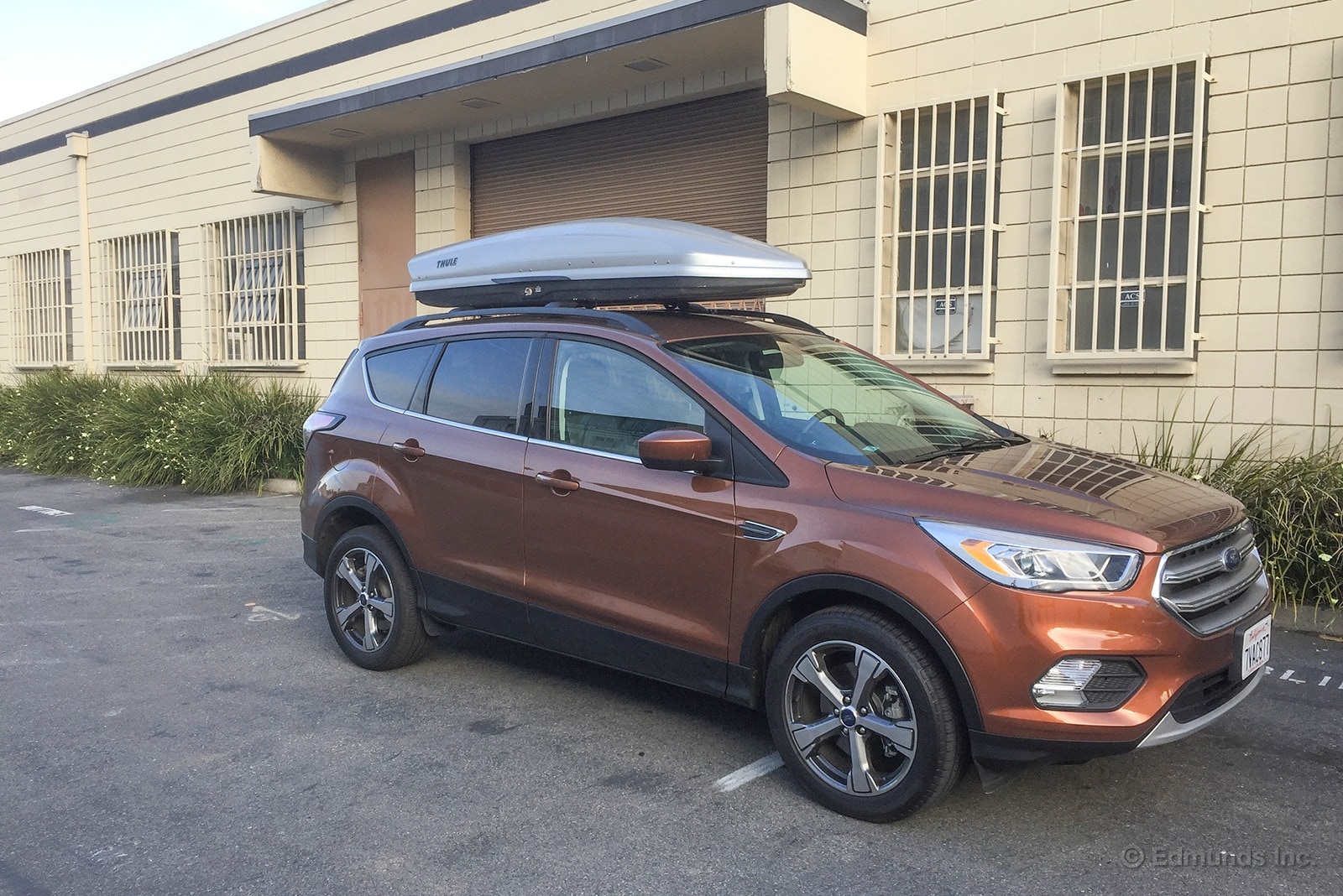
Going up the curving roads of Angeles Crest Highway toward our trailhead destination, the Escape felt great. The steering felt relatively connected on the winding back roads, and ride quality on the way there was good enough to keep the dog happy.
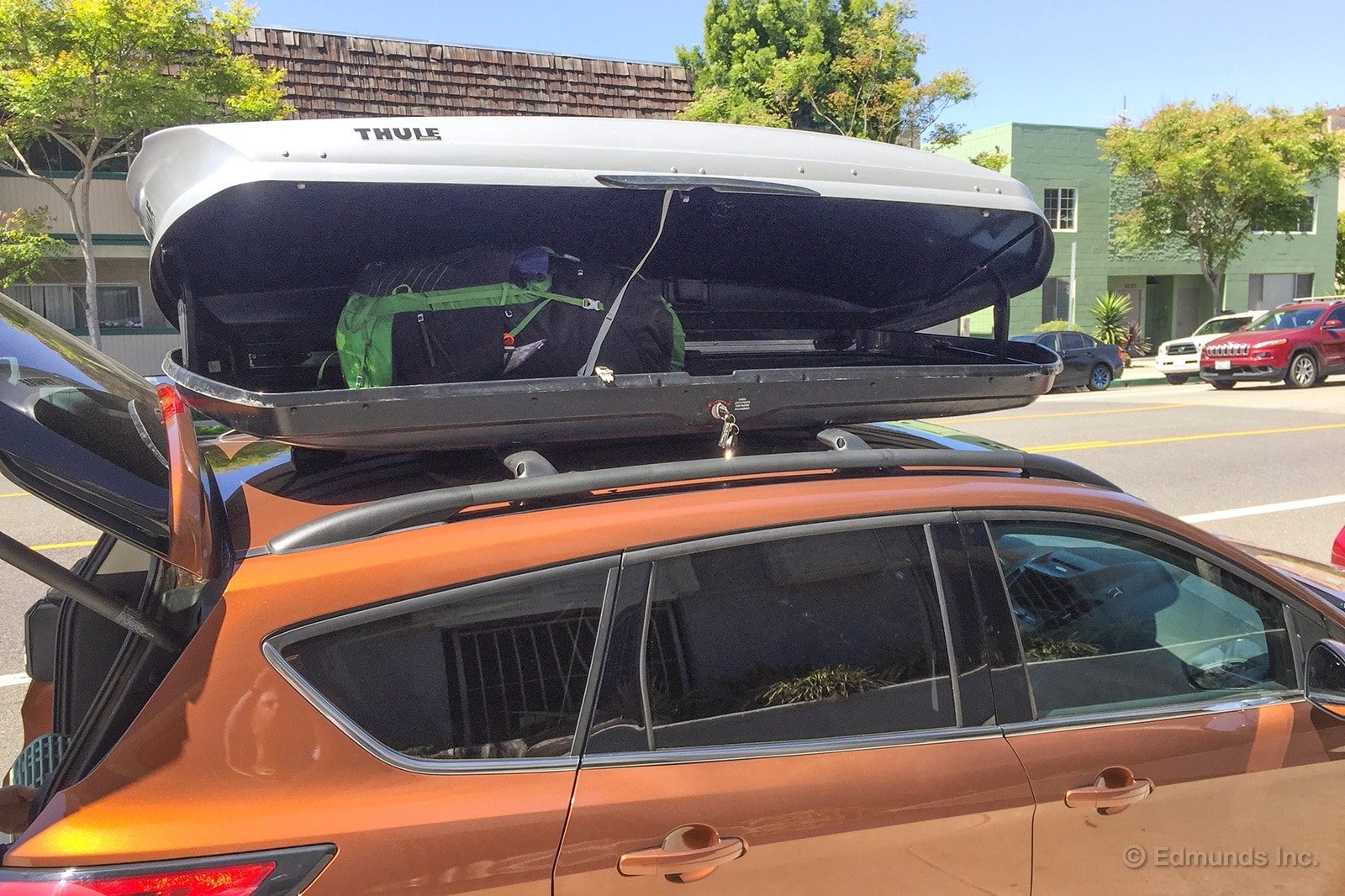
After three days on the trail, we were happy to loop back around and see our ride waiting for us, with the roof rack still attached. It worked especially well as a place to store all our dirty gear from the trip, much like the bed of a pickup truck would function, just higher up and a bit smaller. It was super easy to install, super convenient to have, and I'll definitely be using it again.
Monthly Update for April 2017
Where Did We Drive It?
Our long-term 2017 Ford Escape racked up close to 1,400 miles this month, during which it served commuter duty and as an escape (har har) vehicle for a hiking trip into the local mountains.
We also installed a roof-mounted cargo box for the Escape's trip into the great outdoors. It made it much easier to pack enough gear for the trip and still leave room for passengers.

What Kind of Fuel Economy Did It Get?
The Escape averaged 20.2 mpg over the course of the month, which wasn't enough to move its lifetime average. April's fuel economy result extends the Escape's streak of performing considerably below its EPA combined estimate, and even below its city number.
Some of April's fuel-heavy ways are attributable to the aforementioned roof cargo box. Still, the Escape's track record of delivering underwhelming fuel economy grows increasingly unlikely to reverse as the miles continue to pile up.
Average lifetime mpg: 20.5
EPA mpg rating: 25 combined (22 city/29 highway)
Best fill mpg: 29.3
Best range: 338.7 miles
Current odometer: 12,366 miles
Maintenance and Upkeep
None.
Logbook Highlights
Performance
"The Escape is definitely a sporty option in this segment. It feels urgent and ready to make a pass at just about any time. Throttle response in town and on the highway are excellent. While there may be more comfortable options in the compact SUV segment, this one certainly makes sense as a driver's car." — Travis Langness, automotive editor
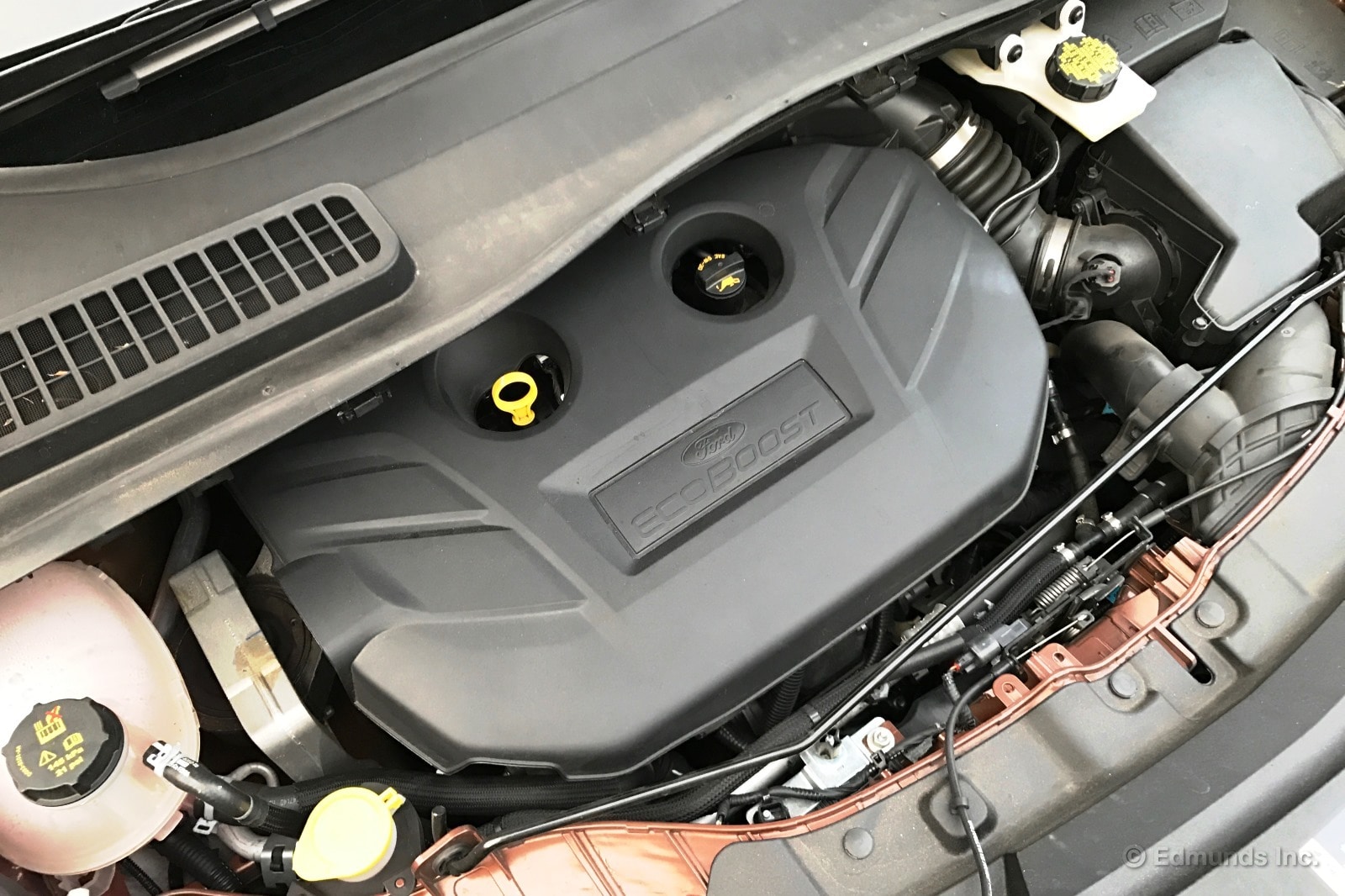
"I'm on record as saying the new 2017 CR-V's 1.5-liter turbo engine is good enough to make me wonder if I'd miss the Escape's 2.0-liter turbo. Well, I'm not wondering anymore. I took the Escape home for the first time in a while and was impressed anew by the eager acceleration and exceptional refinement of this motor. The CR-V turbo is a step above the small-crossover norm, for sure, but the 2.0-liter Escape is clearly an additional step up. I also like how the Escape's conventional automatic transmission downshifts smartly whenever I punch the gas — there's none of the delayed ramp-up to peak power you get with Honda's continuously variable automatic transmission." — Josh Sadlier, senior manager, content strategy
"I finally found the limits of the Escape's turbocharged engine. OK, maybe not the extreme limits, but at least a situation where I wasn't overwhelmed by its performance. I was headed down the local toll road, which is a wide-open stretch of highway with lots of hills. With two teenagers onboard and a cargo bay full of weekend bags, the Escape had trouble maintaining its speed up some of the steeper inclines. It wasn't terrible, but it was the first time that this Escape felt anything but eager to accelerate." — Kelly Hellwig, manager of content production
Miscellaneous
"The color on this thing is fantastic in the sun. It just looks like a dull brown sometimes in the shade, but it really pops in sunlight. Kudos, Ford." — Travis Langness
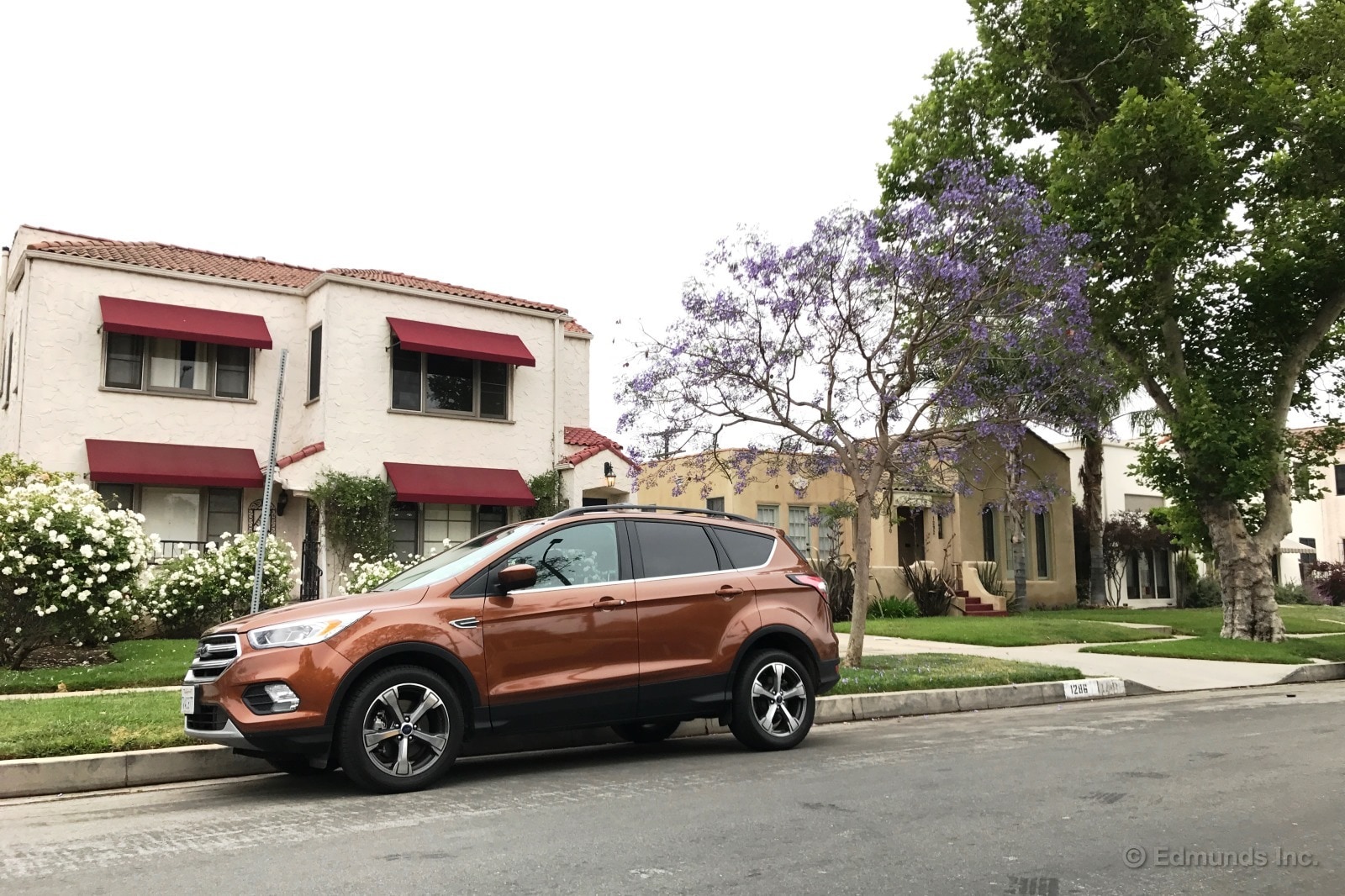
Monthly Update for May 2017
Where Did We Drive It?
We drove our 2017 Ford Escape about 1,700 miles in May. Alongside the normal commuting, we traveled from our Edmunds offices in Santa Monica, California, to Las Vegas for a video-related conference and, later in the month, made a trip to Fresno (home to this year's National Spelling Bee's champion, incidentally).
From all that, we've got newfound commentary about our Escape's fuel economy (maybe it's not as bad as we thought), reporting on a windshield repair, and observations on our Escape's lack of certain desirable features and its merit as a small crossover we'd recommend to friends.
What Kind of Fuel Economy Did It Get?
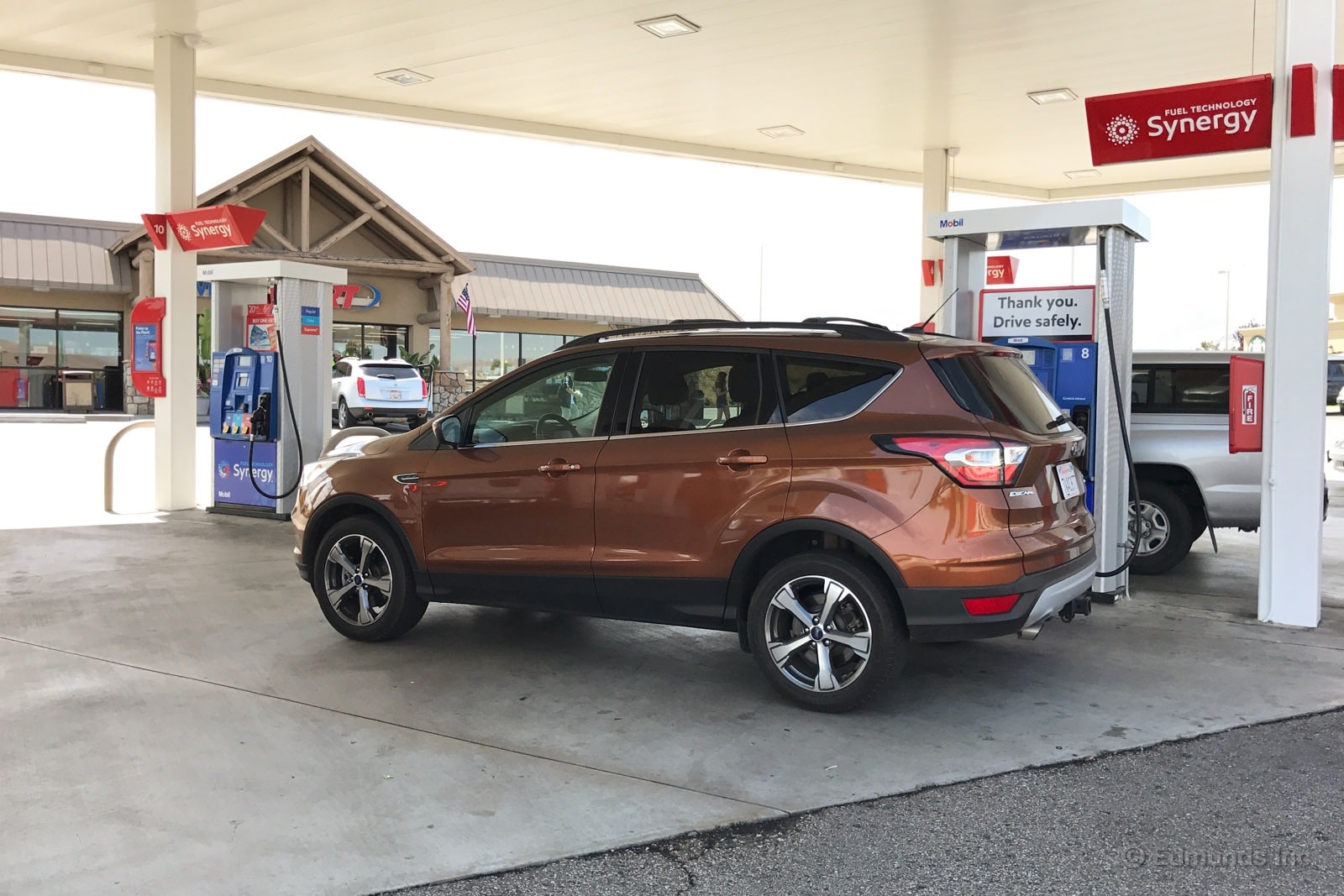
Our Escape's strong turbocharged 2.0-liter engine performance has gotten a lot of deserved love from our staff these past few months. But we've also previously reported that the obvious trade-off is fuel economy. From those 1,700 miles in May, it averaged just 18.7 mpg.
Not so great. But that's perhaps not as bad as some of my co-workers previously thought. I was checking fuel economy on our Escape and noticed that the EPA numbers we were listing — 25 mpg combined (22 city/29 highway) — are for the front-wheel-drive Escape. Our Escape is all-wheel drive. As such, EPA fuel economy is actually 23 mpg (20 city/27 highway).
Lifetime, we're at 19.9 mpg. That's still below EPA combined. But if you've been following our Escape coverage, maybe a lowered expectation will help soothe the pain. I'll also follow up on a comment left on a prior update in which a reader asked if we've been filling up with regular or premium gas. We've put premium 91 octane gas in a few times, but the vast majority of fill-ups have been with regular.
Another observation: We list our best range below. But our average distance is more indicative of real-world driving. I looked at our Escape's fuel log. Since February 1, we've had to stop for gas every 206 miles, on average. Is the typical Escape owner with a turbo 2.0-liter engine under the hood going to put up with that?
Average lifetime mpg: 19.9
EPA mpg rating: 23 combined (20 city/27 highway)
Best fill mpg: 26.6
Best range: 338.7 miles
Current odometer: 13,966 miles
Maintenance and Upkeep
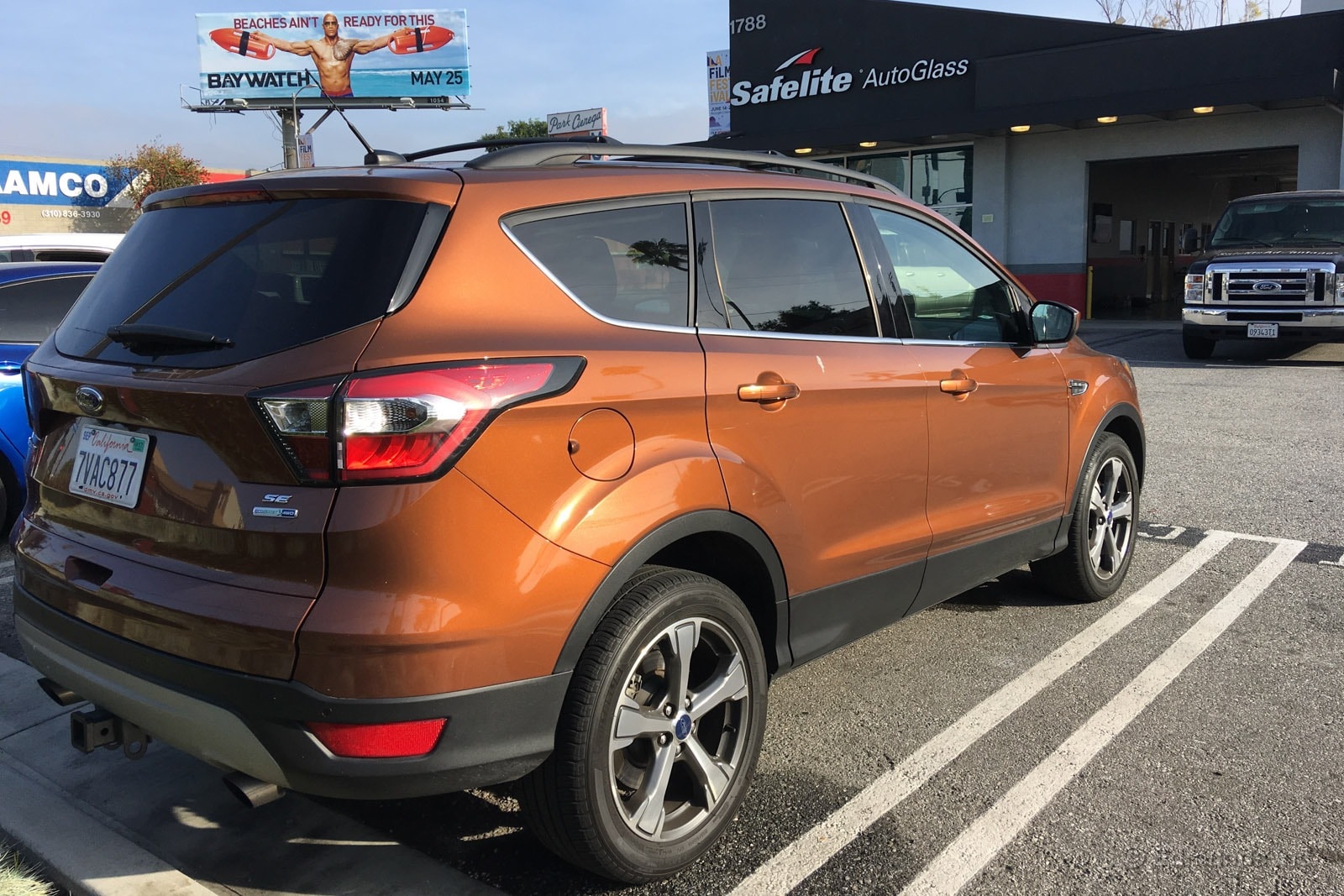
A couple guys from our video team drove our Escape to Las Vegas and back for a conference in May. On their return trip, a kicked-up rock hit the windshield and left a small crack. Over the next few days, the crack grew. So Vehicle Testing Assistant Michael Massey made an appointment to have the windshield replaced with Safelite. The total cost was $482.06. It took the technicians about an hour to complete.
Logbook Highlights
Performance
"There is plenty of 'go' with this engine. It really picks up well from low rpm. It might even be a little too eager — the turbo-four's torque is fun and addictive. Naturally, the more often you revel in the acceleration, the worse the fuel economy." — Jason Kavanagh, road test editor
Comfort
"As the miles have accumulated, our Escape's ride sounds clompier. And I don't know if it has always been like this but the steering, while quick, feels numb."— Jason Kavanagh
"The vertical center air vents don't cut it. They don't move a lot of air, and the air they do push tends to hit your right hand when you're holding the steering wheel. Their narrow, vertical nature also means the vents lack any meaningful adjustability and just kind of push the air wherever. When it's hot outside, they're not good for much." — Kurt Niebuhr, photo editor
Technology-Audio
"It's unfortunate that you have to spend at least $30,000 on the Escape Titanium edition to get keyless entry and start. Our Ford Escape SE had an MSRP of $32K, and it wasn't even an option on that trim. It is more convenient not to have to dig out the keys from your pocket when your hands are full. I realize that smart keys aren't universally liked, but we should at least have the option to buy it it on the middle trim. For comparison,many top rival small crossovers such as the Honda CR-V, Kia Sportage and Mazda CX-5 come with this feature standard in their respective midlevel trims." — Ron Montoya, senior consumer advice editor
Interior
"I had a thought similar to what Ron wrote about regarding the lack of keyless ignition and start. I was wondering why there's not a leather-wrapped steering wheel on our midgrade Escape SE. It turns out that it's just an option we didn't get on our test car. For the SE, a leather-wrapped steering wheel is part of the SE Sport Appearance package or the Leather Comfort package. Both have an MSRP of more than $1,000." — Brent Romans, senior editor

"Every time I rest my arm on our Escape's center console, it squeaks. I can't tell what part of it squeaks, either. It's getting annoying." — Brent Romans
Cargo Space
"Ford lists the Escape's cargo capacity at 34 cubic feet with the rear seats up and 68 cubic feet with them lowered. A few rival crossovers put up slightly bigger numbers, but the Escape should still be plenty useful for hauling goods. It's a big opening, and the rear seats fold completely flat." — Brent Romans
Miscellaneous
"I'm not one to leave a car's auto stop-start feature turned on, but I have no qualms with the Escape's. It's quick to fire, not overly quick to shut off, subtle and lets you make a quick getaway. And let's face it, our Escape needs all the fuel economy help it can get." — Kurt Niebuhr
"I've been driving our Escape for two weeks straight and been wondering if I'd recommend it to a friend shopping for a small crossover. The best I can come up with is 'maybe.' It's competent, yes, but there's nothing here that really jumps out to me as a major reason to buy an Escape. I suppose there's the strong 2.0-liter turbo engine, but I don't see that as a significant draw for most shoppers considering the lower fuel economy and short range." — Brent Romans
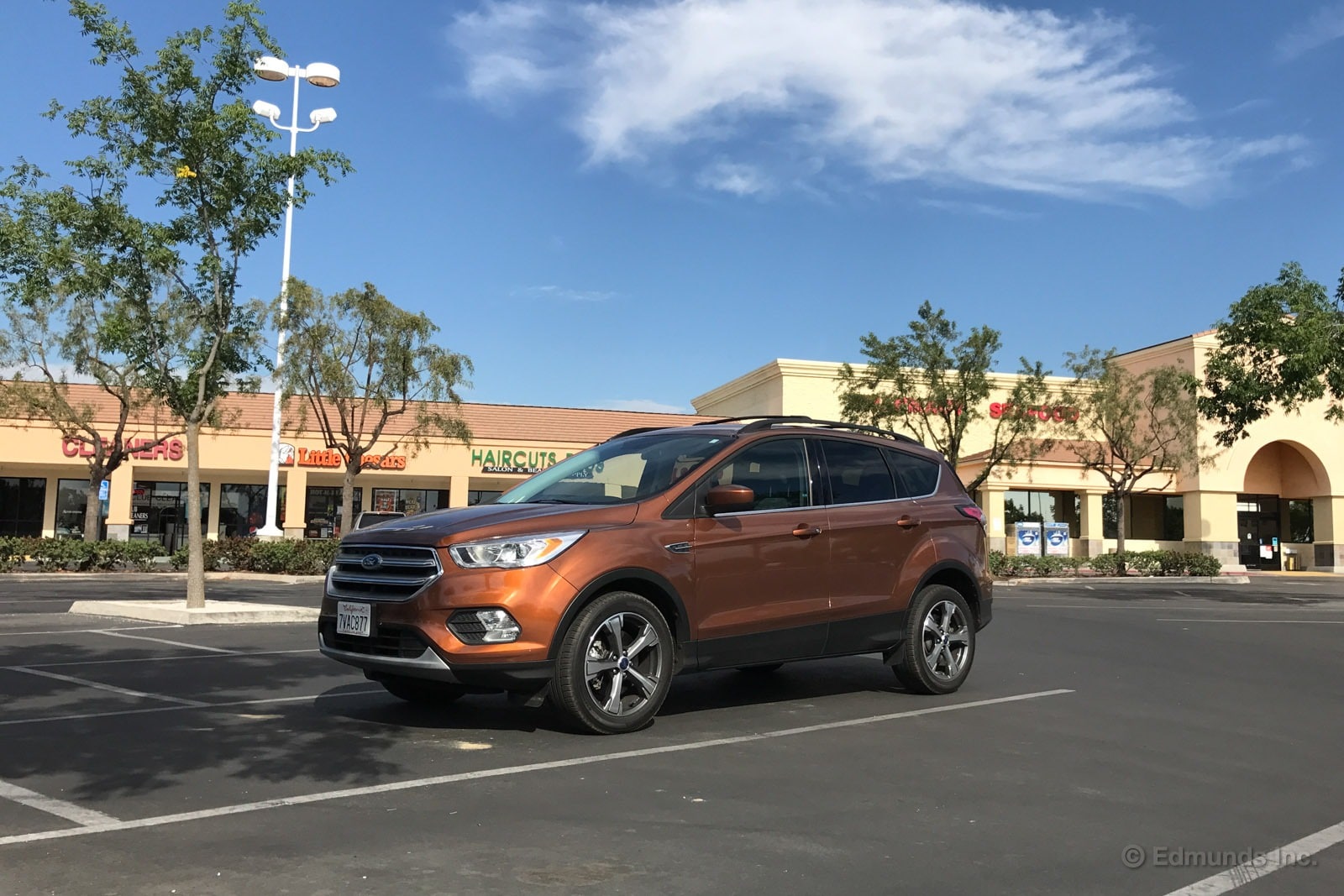
Monthly Update for June 2017
Where Did We Drive It?
You could say that our 2017 Ford Escape accumulated a fair bit of mileage this month, but that would be a gross understatement. We added over 4,800 miles this month. Our test isn't yet three-quarters done, but we're already 94 percent of the way to our 20,000-mile target.
I blame myself.
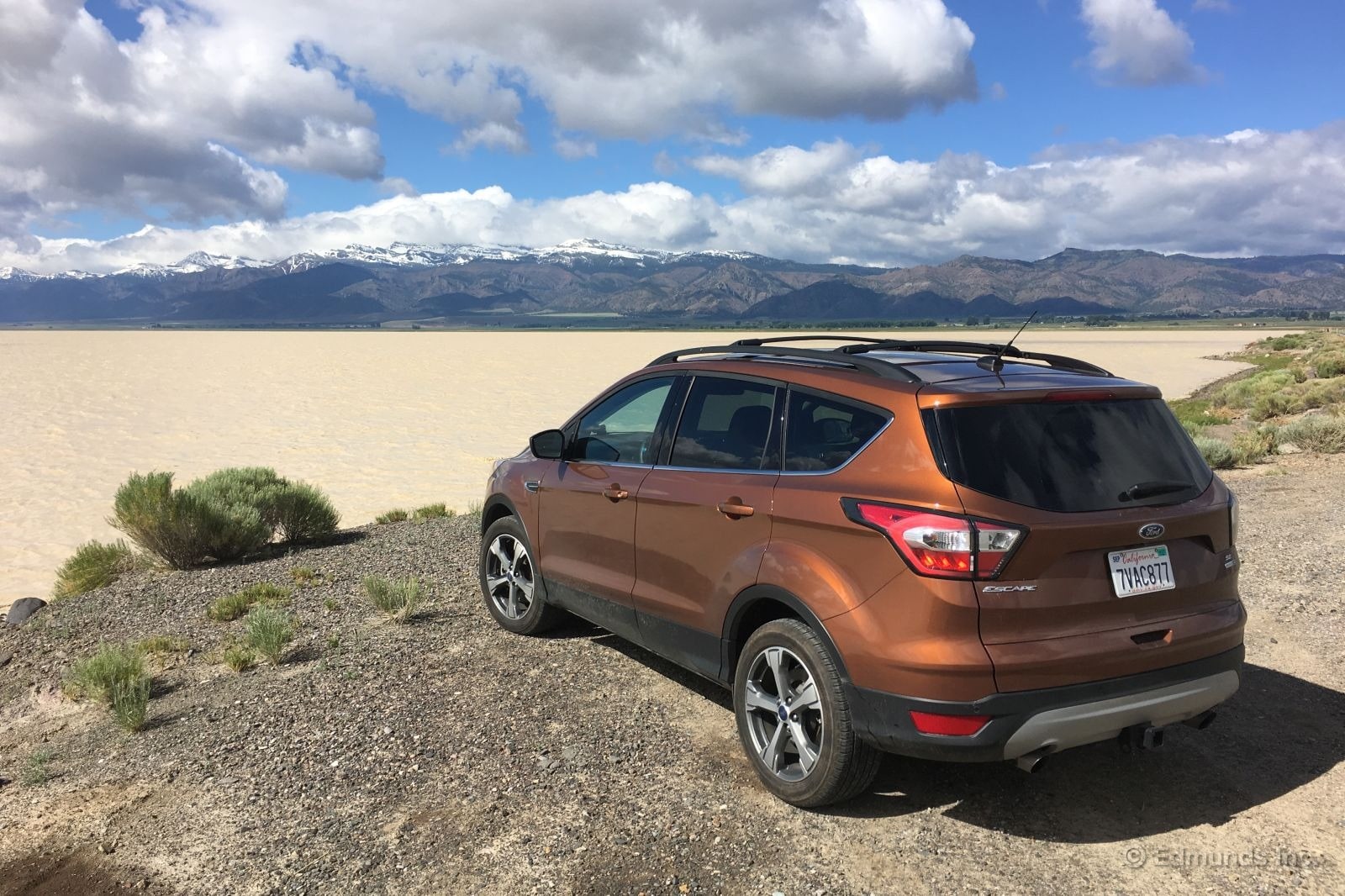
It was I who drove the Escape to the Portland, Oregon, area to attend the introduction of the 2018 Toyota Camry. And I decided to take the scenic route through Bend on the way up and the Oregon coast on the way back. In 10 days, my family and I journeyed 3,106 miles, a fact that my wife and oldest daughter (the younger one has a job and stayed behind) are quick to point out with less than their usual level of enthusiasm.
That's not to say the Escape was uncomfortable. It most definitely was not. Their dissatisfaction had more to do with the ratio of seat time to stationary time.
But I alone cannot account for all of this month's miles. When I wasn't hogging it, a combination of other editors added another 1,700 miles to the thing. Its popularity is well-earned because this compact SUV feels as nice to drive as a Focus, which is no bad thing. It is, more or less, a Focus SUV.
What Kind of Fuel Economy Did It Get?
Our Escape is powered by a 2.0-liter EcoBoost engine, which is another way of saying it's a turbocharged four-banger with a split personality. It's powerful when you want it to be, and it'll drink fuel accordingly if you leadfoot it around. Or it can be remarkably fuel-efficient if you're easy on the go-pedal, which is not as difficult as I'd anticipated. Apparently, its 2.0-liter displacement gives it enough underlying grunt to keep the turbo in the background when you're cruising the open road.
That worked in my favor because, even though my trip was work-related, once we got to Portland, the trip itself was pure vacation. We were never in much of a hurry, and that's reflected in the fuel economy the little Escape was able to generate despite three adult occupants and their luggage.
In all we stopped for fuel 10 times, and four of those tanks eclipsed the previous best tank of 26.6 mpg. In fact, the entire 3,106-mile trip beat that previous best tank by averaging 26.7 mpg. Somewhere along the way I set a new range record of 408.3 miles, and that tank also pushed the top tank milestone to 32 mpg — a full 5 mpg better than the 2.0-liter Escape AWD's highway rating of 27 mpg. And that was no fluke because the next tank was 29.2 mpg, and it could have been higher if not for a healthy dose of freeway traffic near the end. And I wasn't exactly poking along; I went 70 mph when conditions allowed.
And that's the thing about this 2.0-liter EcoBoost engine. If you're a leadfoot or if you live in the city, you'll probably be disappointed. But the same engine driven in an unhurried fashion in rural areas can do quite well. Even though this assessment is a mixed bag, it's still more encouraging than our experience with a 2015 Ford F-150 with the 2.7-liter EcoBoost V6. That truck fell far short of its rated fuel economy during its long-term test, but it also struggled when driven more or less exactly the same way (and on nearly the same route) as I drove our Escape to Portland and back.
Average lifetime mpg: 20.9 (up from 19.9)
EPA mpg rating: 23 combined (20 city/27 highway)
Best fill mpg: 32.0 (up from 26.6)
Best range: 408.3 miles (up from 338.7)
Current odometer: 18,776 miles
Maintenance and Upkeep
No maintenance was necessary this month. Maybe next time.
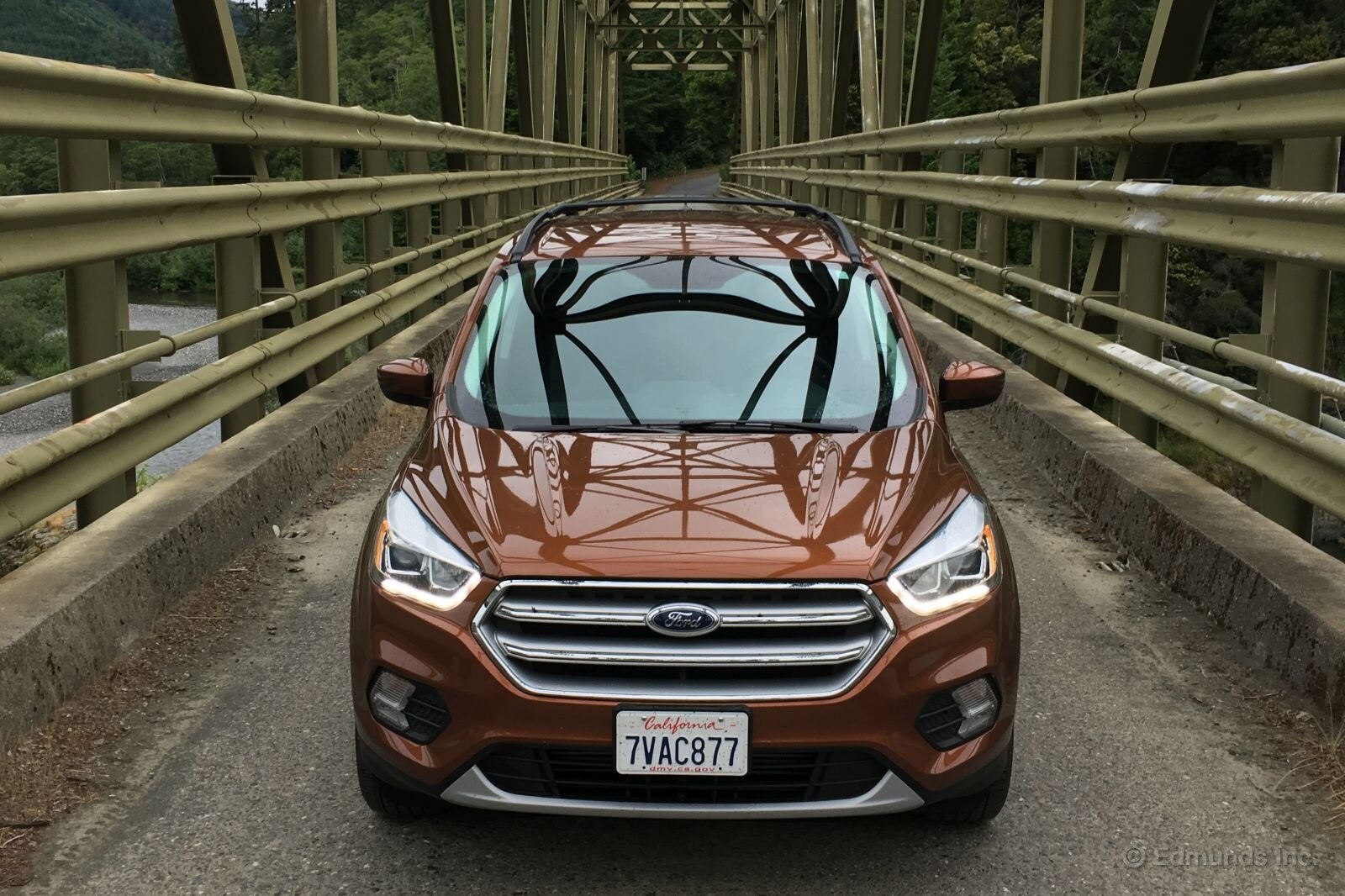
Logbook Highlights
Performance
"The Escape is extremely stable and even engaging on winding mountain roads, of which there are many in Northern California and Oregon. The chassis is composed, body motions are nicely regulated, and it responds precisely to steering inputs. And the driver feels connected because the wheel transmits a surprisingly accurate sense of feel and feedback.
"The trouble is driving arrow straight on the open road at cruising speed, where the same steering feels a little too pointy. Reach over to adjust the volume and the Escape may go that way. Look out the window and it may follow your gaze, if only to a minor degree. Such tiny involuntary movements can initiate motions that passengers can sense. It needs a tiny bit less directness right at center, but not so much that it spoils what's so good about it when the road isn't perfectly straight." — Dan Edmunds, director of vehicle testing
Comfort
"The Escape is a pleasant-riding machine that soaks up rough roads cleanly and doesn't jostle the occupants. And it does this without being overly floaty and buoyant. Ford seems to have found the sweet spot." — Dan Edmunds
"This isn't the quietest road trip machine I've ever driven. It seems to generate more road noise than the competition. Some of these roads are coarse because the locals use studded tires in winter, but it's more wide-ranging than that. It only feels quiet on the smoothest of brand-new asphalt surfaces, but that's when you start to notice the wind rush around the body." — Dan Edmunds
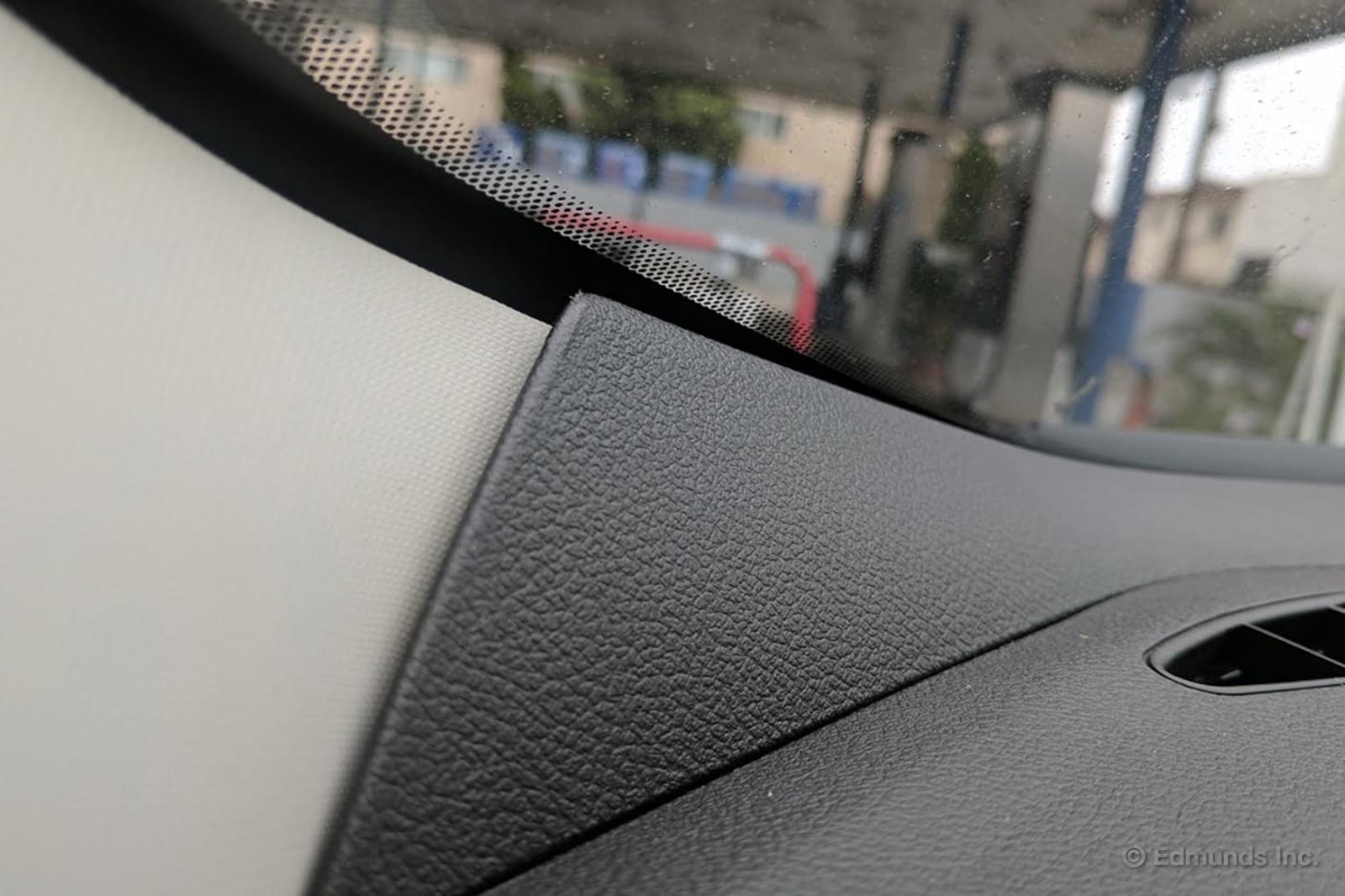
Interior
"I'm hearing more creaks and clicks from the interior panels than I should. Awhile back a distinct rhythmic click corresponded to the steps on a fairly standard concrete freeway I drive all the time, and on certain asphalt surfaces there's a rattle high up on the center stack that I can modify with hand pressure, but cannot eliminate. Other random noises have popped up here and there. It's nothing like constant, but anything of the sort is unexpected in a car with so few miles on it, especially nowadays. Looking around I see lots of panels with joints in between. There seems to be many parts that could move relative to one another. Many of the seams don't line up very well, and there's a fair bit of low-grade plastic in here, which would be irksome on its own even if everything fit tightly and kept quiet." — Dan Edmunds
"The steering wheel looks like it's made out of recycled tires. If it is, I applaud Ford for its eco-mindedness, but I don't think that's the case. It's a shame this material is so cheap-feeling because the steering wheel actually has a nice shape to it. Had the carmaker just wrapped this in leather or some other non-crappy material, it would be 100 times better. I'm tempted to pick up one of those covers from Pep Boys. Even that would be an improvement." — Jonathan Elfalan, road test manager
"Before I go all Debbie Downer on the Escape, let's be clear. I like the Escape. In fact, I like it a lot. That's why the tiny fails I noticed, the kind of interior fit and finish blunders that made me literally blurt out 'Oh come on!', bother me so much. Not because the mistakes are big or gross, or that they take away from performance or functionality. But when you miss something that is in the driver's line of sight, it shows a lack of attention to detail. It's like being served a drink in a glass at a restaurant that has lipstick on it. I owned a Ford Edge a few years ago and dug it. I felt confident it was made well. Small details like these misses don't inspire the same confidence." — Matt Jones, automotive editor
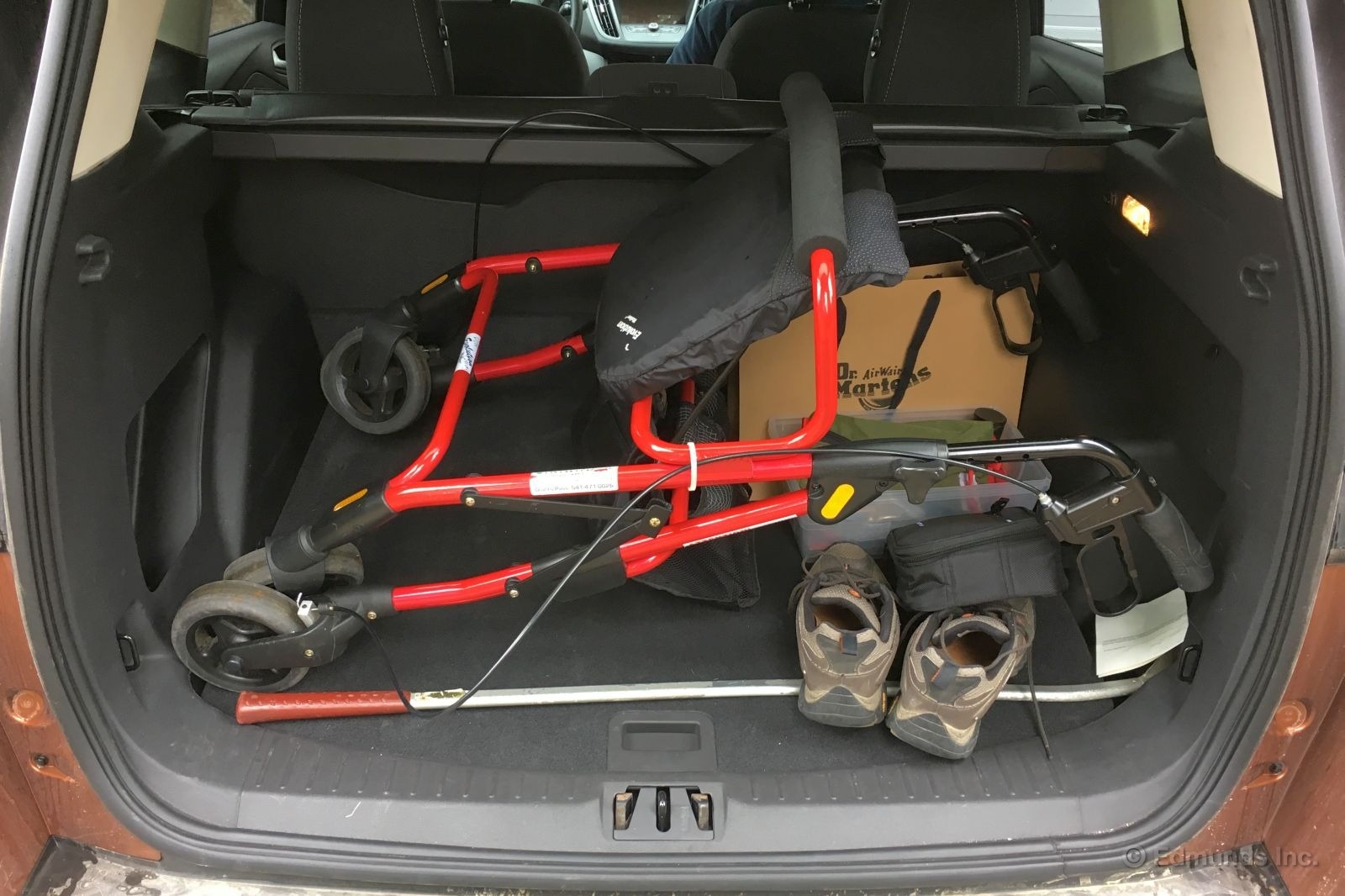
Cargo Space
"Dad is getting on in years, and he's regularly using one of those wheeled walkers that has a hand brake and a seat he can rest on. It helps him a lot, and he brings it everywhere. Naturally, it had to fit in the Escape when we went for a ride during our visit. It fit, but I had to wrestle with it some." — Dan Edmunds
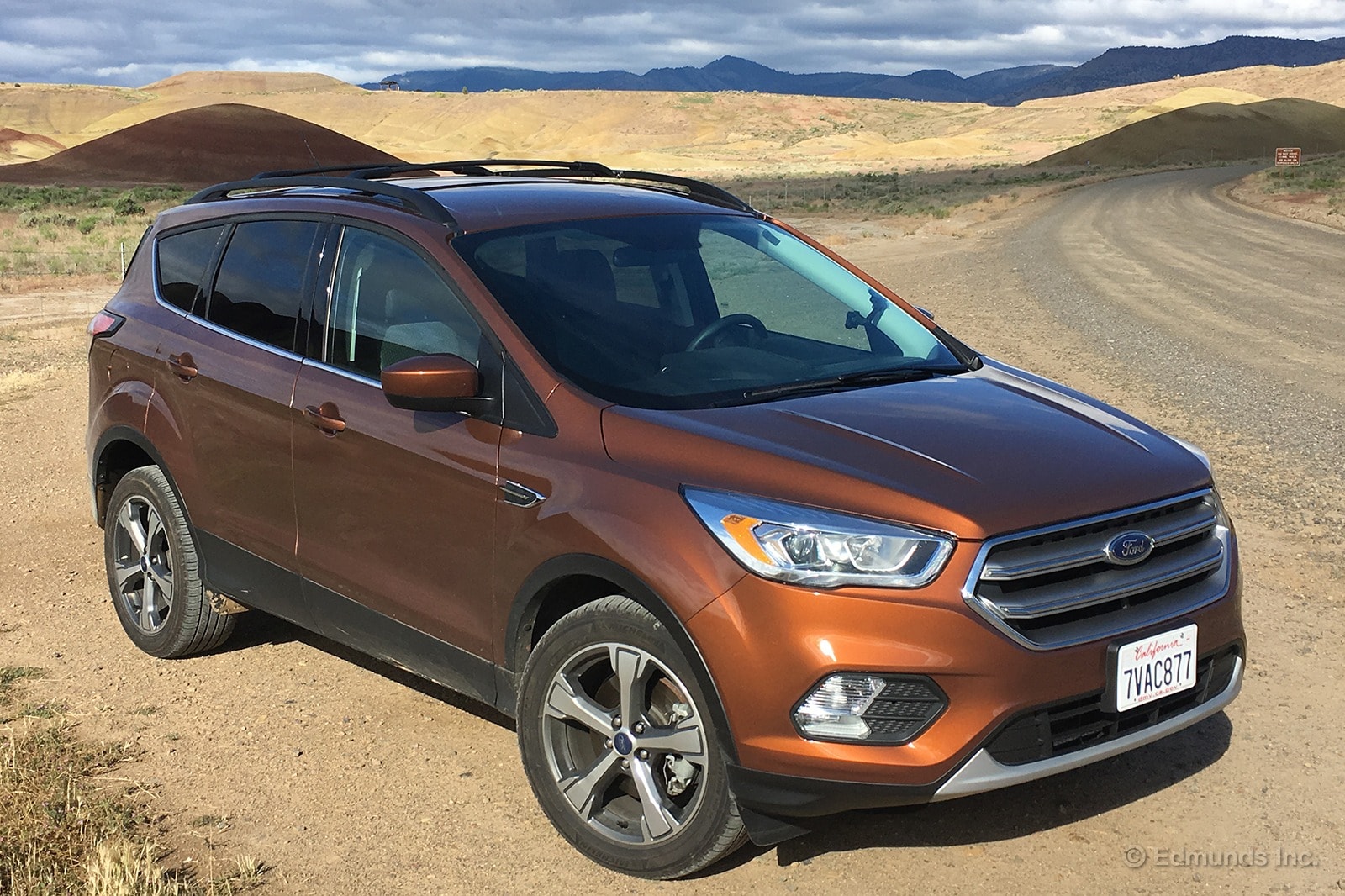
Where Did We Drive It?
Last month our 2017 Ford Escape traveled nearly 5,000 miles between editor Dan Edmunds' road trip to Oregon and numerous around-town trips, but July saw the Escape's return to normal commuting duties. In fact, it may have been an overcorrection: The Escape added only 973 miles to its odometer last month, far below our target monthly average of 1,700 miles. Still, the Escape is on track to top our overall yearly target of 20,000 miles in short order.
What Kind of Fuel Economy Did It Get?
We averaged 19.2 mpg during the month of July, just below the Escape's city rating. We mostly used it for trips around town, so this number isn't surprising. Since we added so few miles in July, the Escape's overall fuel economy didn't budge at all. At 20.9 mpg, we're still 2 mpg below the EPA's combined rating of 23 mpg, a number that's not likely to change much.
Average lifetime mpg: 20.9
EPA mpg rating: 23 combined (20 city/27 highway)
Best fill mpg: 32
Best range: 408.3 miles
Current odometer: 19,749 miles
Maintenance and Upkeep
None.
Logbook Highlights
Interior
"The Escape's dashboard looks tired to me, especially compared to new arrivals like the 2017 Honda CR-V and Mazda CX-5. The styling and switchgear hark back to when the current Focus debuted, which seems like eons ago. I like the Sync 3 infotainment system (although Bluetooth playback froze twice on me over the weekend), but it's an island of modernity in a sea of dated contours and controls. The gauges are tacky, too. I salute the Escape's enduring sales success, but it's time for an overhaul in here." — Josh Sadlier, senior manager, content strategy
Technology-Audio
"Back in January, Ed wrote that he liked the simplicity of our long-term Escape. I totally agree. The Escape might seem a step or two behind the current crop of CUVs in the tech department, but that's OK. Some people prefer knobs and buttons over touchscreens and voice commands. I'm not sure which side of the fence I'm on, but I do know that when I drive the Escape, I appreciate how easy and intuitive the controls are." — Matt Jones, senior consumer advice editor
"I love listening to music from my personal library, and I don't have an unlimited data plan on my phone. These reasons are why I break out my old-school, final-generation iPod Classic when I get tired of satellite radio and podcasts. Sync 3 seems to hate indexing my iPod library. Between the Lincoln Continental and Escape, I usually have to go through several iPod resets and vehicle on-off cycles before I can select music through the touchscreen. With our long-term Chevy Volt, I just plug in the iPod and my music is accessible about 30 seconds later." — Cameron Rogers, staff writer
Maintenance
"The Escape's front center armrest makes an irritating creaking sound whenever you put pressure on it. If you use the armrest as an armrest, in other words. Next time we take the Escape in for service, we'll have it checked out." — Cameron Rogers
Miscellaneous
"I'm gonna keep beating this drum with current Ford products: There's just not enough driving range for comfort in these cars. I pulled into a gas station today with 257 miles on the Escape's trip meter and an indicated zero — zero! — miles to empty. The computer said I was averaging 18.7 mpg, which is pretty typical for this powerful rig. So we're talking about a real-world range of 250 miles in mixed driving, give or take. Our old Mustang GT had similar issues, as does our current Lincoln Continental. Sure, you can plan around it, but 250 miles? A Chevy Bolt can do that! I'd like to see Ford's gas tanks grow by a few gallons to make 300 miles between fills a distinct possibility. Feels like we're getting shortchanged as things stand." — Josh Sadlier
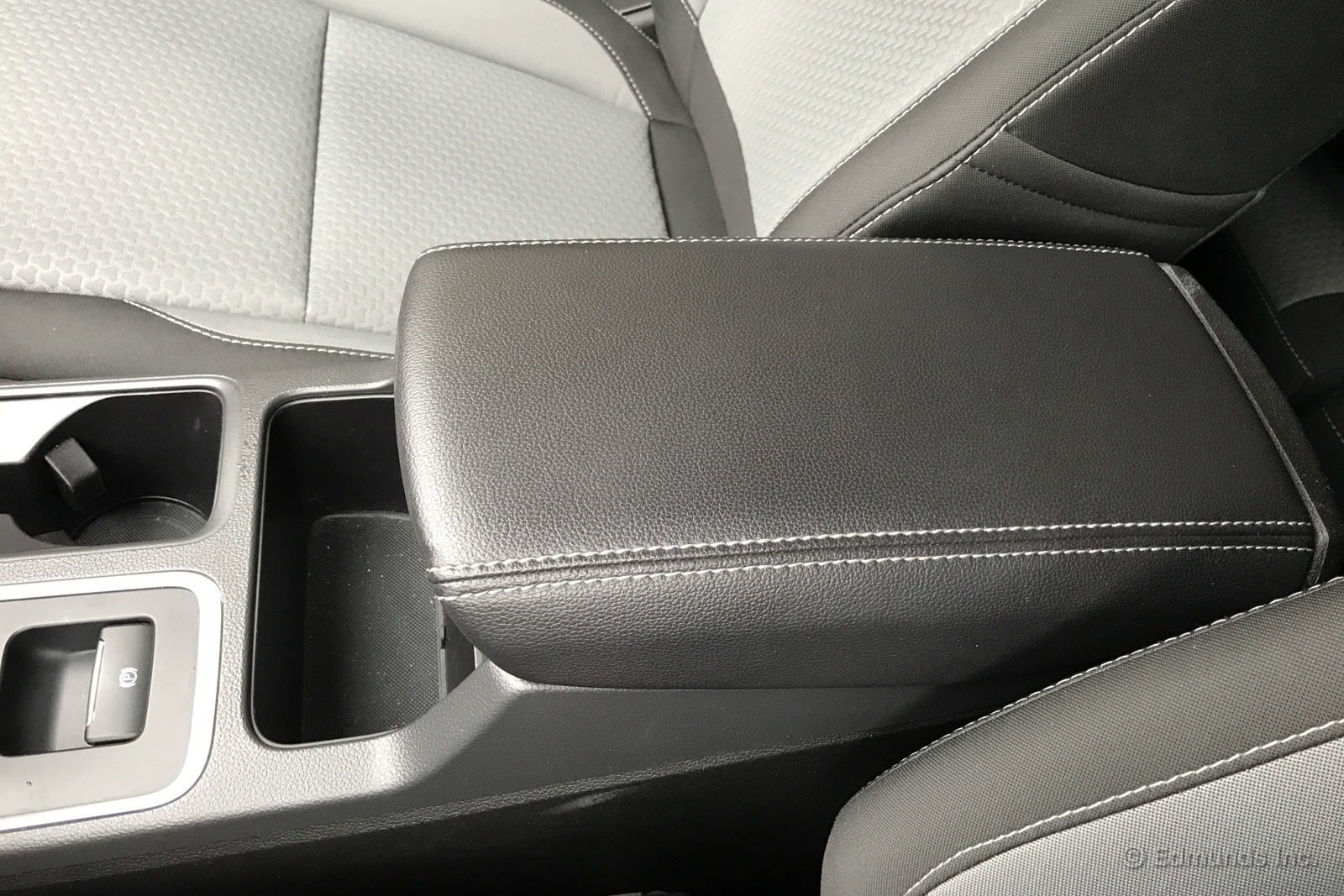

Where Did We Drive It?
We gave our long-term 2017 Ford Escape the month of July off after clocking nearly 5,000 miles the month before. Come August, it decided to extend its sabbatical.
During its time of reflection at home, the Escape discovered it doesn't do city life all that well, at least in terms of fuel economy. All that low-end torque is just too available to not dig into every time you have to dive into the traffic stream or run up an on-ramp.
Despite its leisurely month, our Escape still surpassed its 20,000-mile goal early.
What Kind of Fuel Economy Did It Get?
During the month of August, we turned the fewest miles and the lowest average fuel economy since taking ownership of the our 2017 Ford Escape. With commuting making up the majority of the 322-mile month, our Escape returned a disappointingly low 17.4 mpg average. This was enough to drop our lifetime economy by a tenth of an mpg — no big deal — right as we clicked over our 20,000-mile target. We've got one more month to go on our full year of ownership.
Average lifetime mpg: 20.8
EPA mpg rating: 23 combined (20 city/27 highway)
Best fill mpg: 32.0 miles
Best range: 408.3 miles
Current odometer: 20,071 miles
Maintenance and Upkeep
None.
Logbook Highlights
Performance
"Having tested the turbo 1.5-liter-powered Escape just this past week, I really appreciate the difference just a half-liter makes. The smaller engine car weighed in at 3,620 pounds, roughly 200 pounds lighter than our long-term car due in part to its front-wheel-drive layout, but was 2.5 seconds slower getting to 60 mph. On top of this, the 1.5-liter car is only rated 1 mpg better across the board. I'll gladly make that trade for the 2.0-liter's juice." — Jonathan Elfalan, road test manager
Technology
"Sync 3 might be great overall, but the satellite radio streaming quality is garbage. I like audiophile quality. I can't afford it, but I like it. And I can tolerate a wide range of sound quality, but not the overcompressed warble that comes through the Escape's speakers when listening to SiriusXM. The sibilance on vocals, the phasing cymbals — it's bad. Like Napster-circa-2000-96-kbps bad.
"Satellite radio inherently has these bandwidth/compression issues, but the radio receivers in most of our other long-term cars sound decent. The Escape stands out as awful." — Dan Frio, staff writer
Miscellaneous
"I've got to say I'm a little surprised our Escape clicked over to 20K miles so soon. I figured the compact size and limited range of this thing would dissuade people from driving it anywhere but around town. Shows you what I know." — Kurt Niebuhr, photo editor
MPG
"I did nearly everything I could to break 19 mpg for the tank of gas I burned driving around town, but it was no good. I like the sauce of this motor, but if you so much as look at the throttle pedal funny, you get 4 mpg. I know others on staff have hit and exceeded the EPA numbers on this thing, but I just don't have the self-control. I blame it on the boost. ..." — Kurt Niebuhr
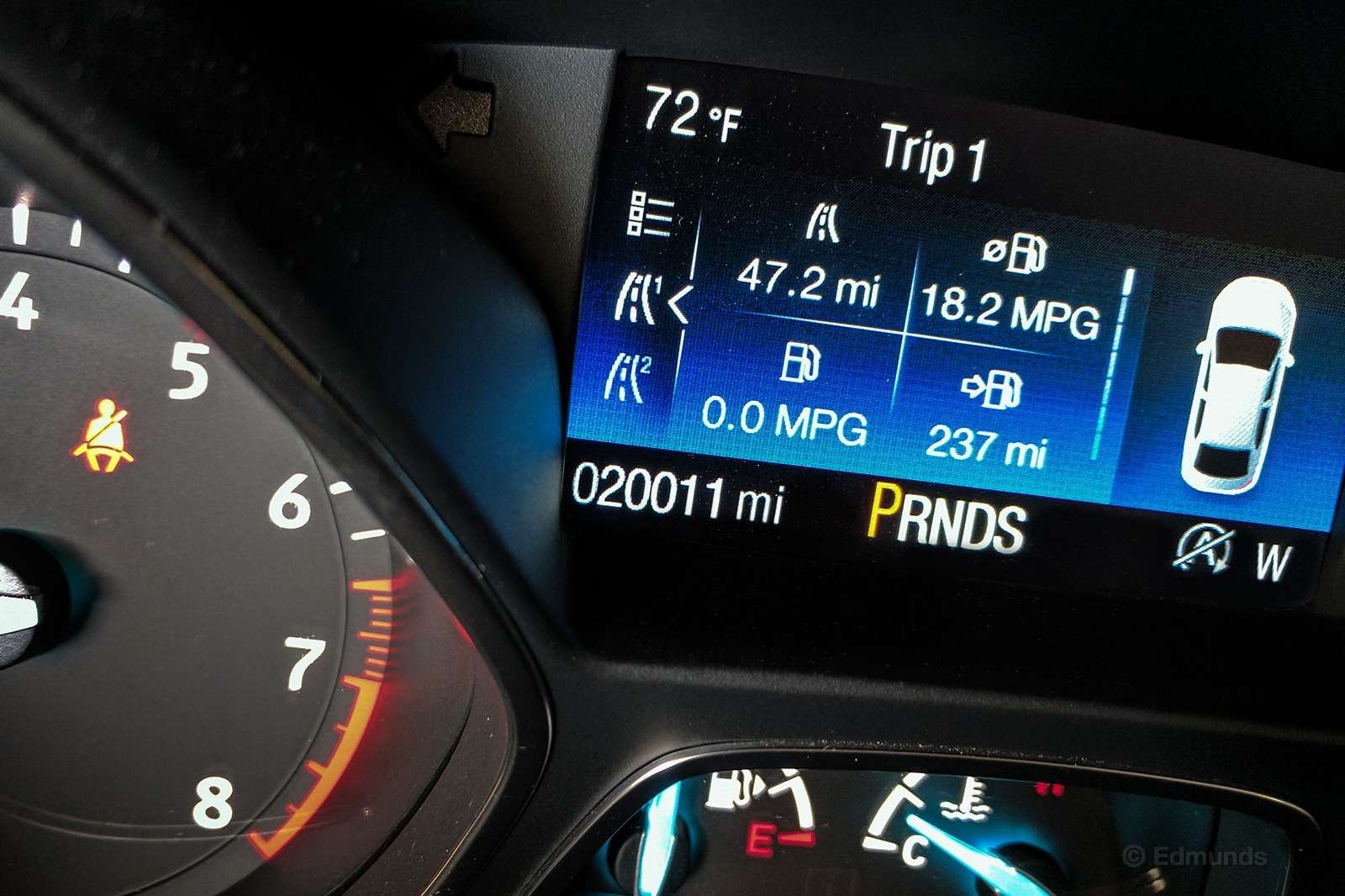
Monthly Update for September 2017
Where Did We Drive It?
Our yearlong test of our 2017 Ford Escape is drawing to a close. We've got about another month to go and then it's off to the pasture with this one. Discounting the day that I locked the ignition key inside, September was an uneventful month for our Escape. Nothing broke and nobody ranted about anything. It was just 1,200 steady miles of utility-enhanced driving plus a brief stop at a Ford dealer for a 20,000-mile scheduled service.
What Kind of Fuel Economy Did It Get?
To the surprise of nobody, our Escape got mediocre fuel economy in September, averaging 19.6 mpg. As Dan Edmunds wrote in our June update, it is possible to get high fuel economy. But the long-term trend for the Escape and its energetic turbocharged engine has definitely been subpar.
Average lifetime mpg: 20.7
EPA mpg rating: 23 combined (20 city/27 highway)
Best fill mpg: 32.0
Best range: 408.3 miles
Current odometer: 21,494 miles
Maintenance and Upkeep
I was on the hook for getting our Escape's 20,000-mile service done so I booked an appointment at my local Ford dealer (Lithia Ford in Fresno, California). It was a standard service that called for an oil change, a tire rotation and an inspection. I was in and out quickly, and the final bill was an agreeable $44.75.
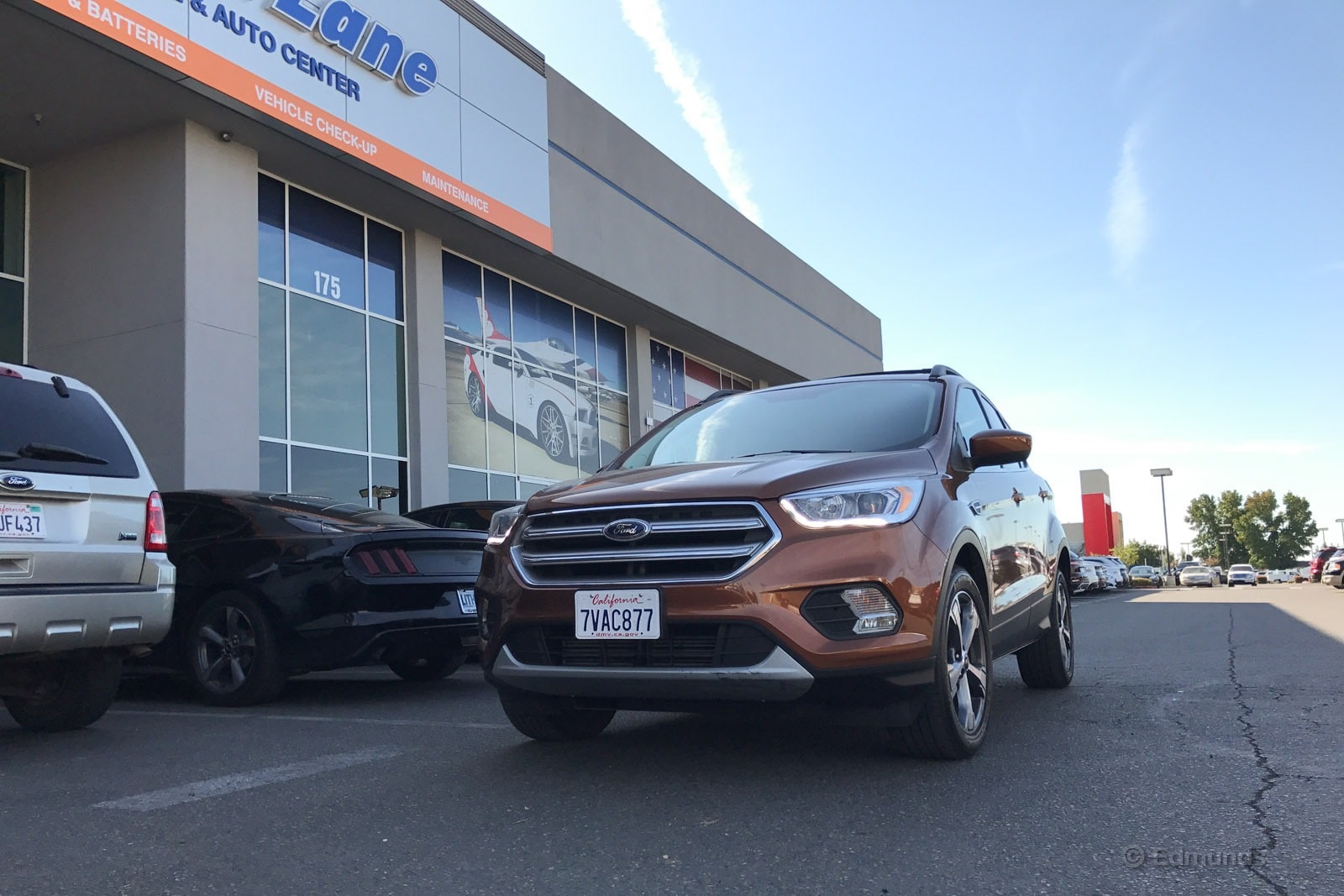
Logbook Highlights
Performance
"I drove the Escape up to my favorite hiking spot. To get to it, I need to drive about 2 miles along an unimproved dirt road at a mild incline. At the trailhead, you're just as likely to see a Prius with an attached bike racked parked in the dirt as you are an SUV. What I'm saying is that although the road has some ruts, pretty much any vehicle can handle this stretch of Mulholland Drive.
"Our all-wheel-drive Escape felt less than sure-footed climbing the bumpy road, and I was a little surprised at how unplanted it felt. The Escape just didn't seem as enthusiastic to be on the dirt as on the road. Ultimately, I made it up the hill just fine, and I suppose that's just fine for 98 percent of urban dwellers whose tires will never touch anything other than asphalt." — Matt Jones, senior consumer advice editor
Comfort
"After nearly a year in our fleet, our Escape is still one of my favorite small SUVs. It does everything in a very competent and understated way that makes it a great daily driver. The ride quality of our Escape is just about perfect. Not so soft that it feels tippy or sloppy, but not so tight that you feel every little bump in the road." — Ed Hellwig, senior editor
Interior
"I'm a fan of the interior. Unlike our CR-V that I find a little overdone, the Escape's cabin is dead simple. Everything is easy to find and use at a glance. The seats are also a bright spot as I always find them supportive and easy to adjust. All of this is pretty basic stuff, but that's what I expect from a compact SUV." — Ed Hellwig
Technology-Audio
"I mistakenly locked our Escape's key (and my phone) inside the vehicle last night. Now, I'll spare you the details on how I did this. Suffice it to say, it wasn't my greatest moment. After realizing I did it, I soon thought of Ford's keypad entry feature. 'Oh, I'll just enter the code to open the door!' Just one problem — I didn't know the code. And since it was nighttime, nobody was at the Edmunds office to check if we had the code written down anywhere. I ended up having to have a locksmith get me in. Sure enough, keypad entry is cool feature and could save a lot of potential hassle — if you remember the code." — Brent Romans, senior editor
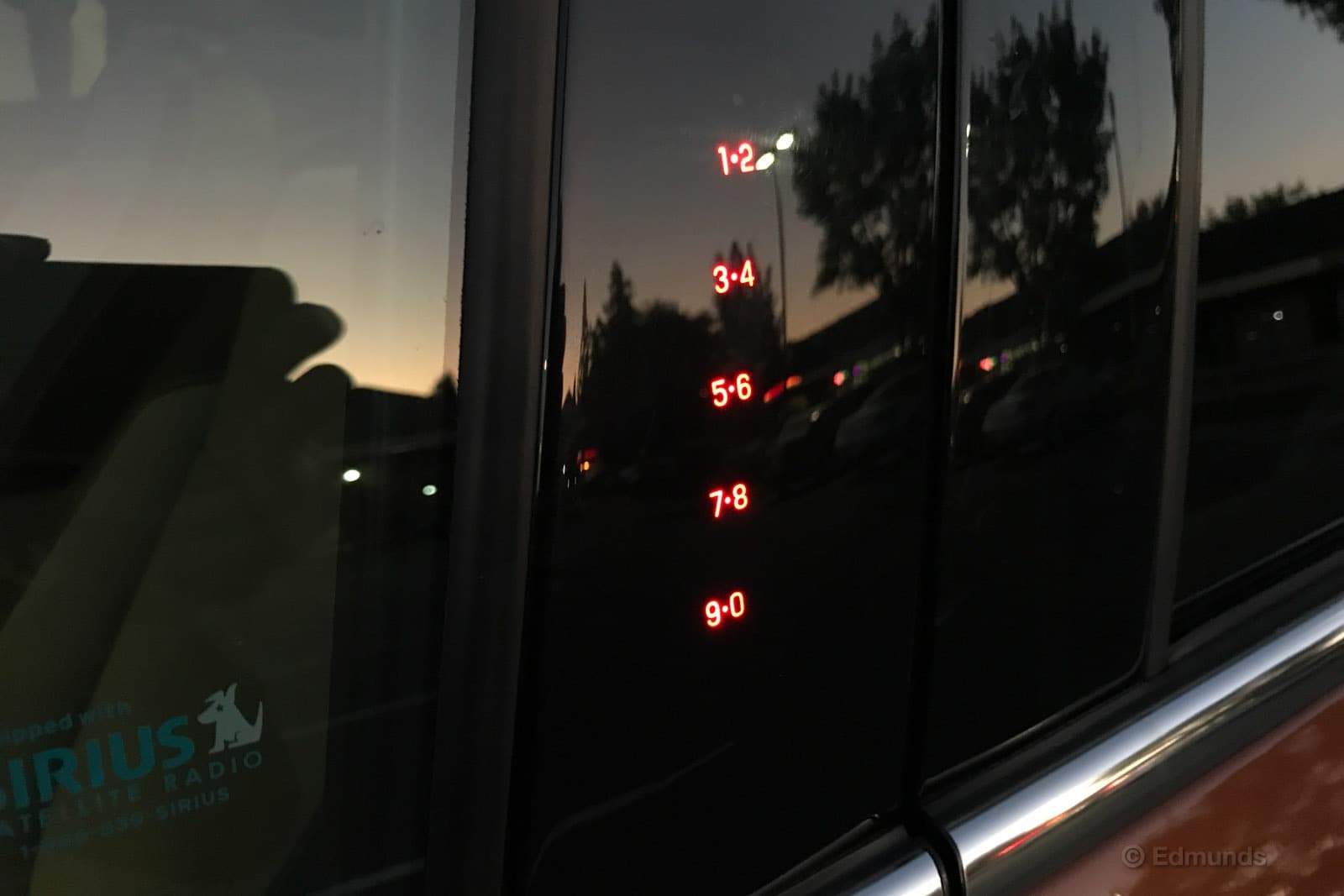
Miscellaneous
"Our Escape is nearing the end of its stay with us. In most regards, it's been a fine small crossover for our long-term fleet. But I don't think I would own one. The smallish and dated interior is a drawback for me, as is the lack of a truly appealing engine from a power and fuel efficiency. I'm not fond of the way Ford sets up the Escape's trim levels and feature mix, either." — Brent Romans
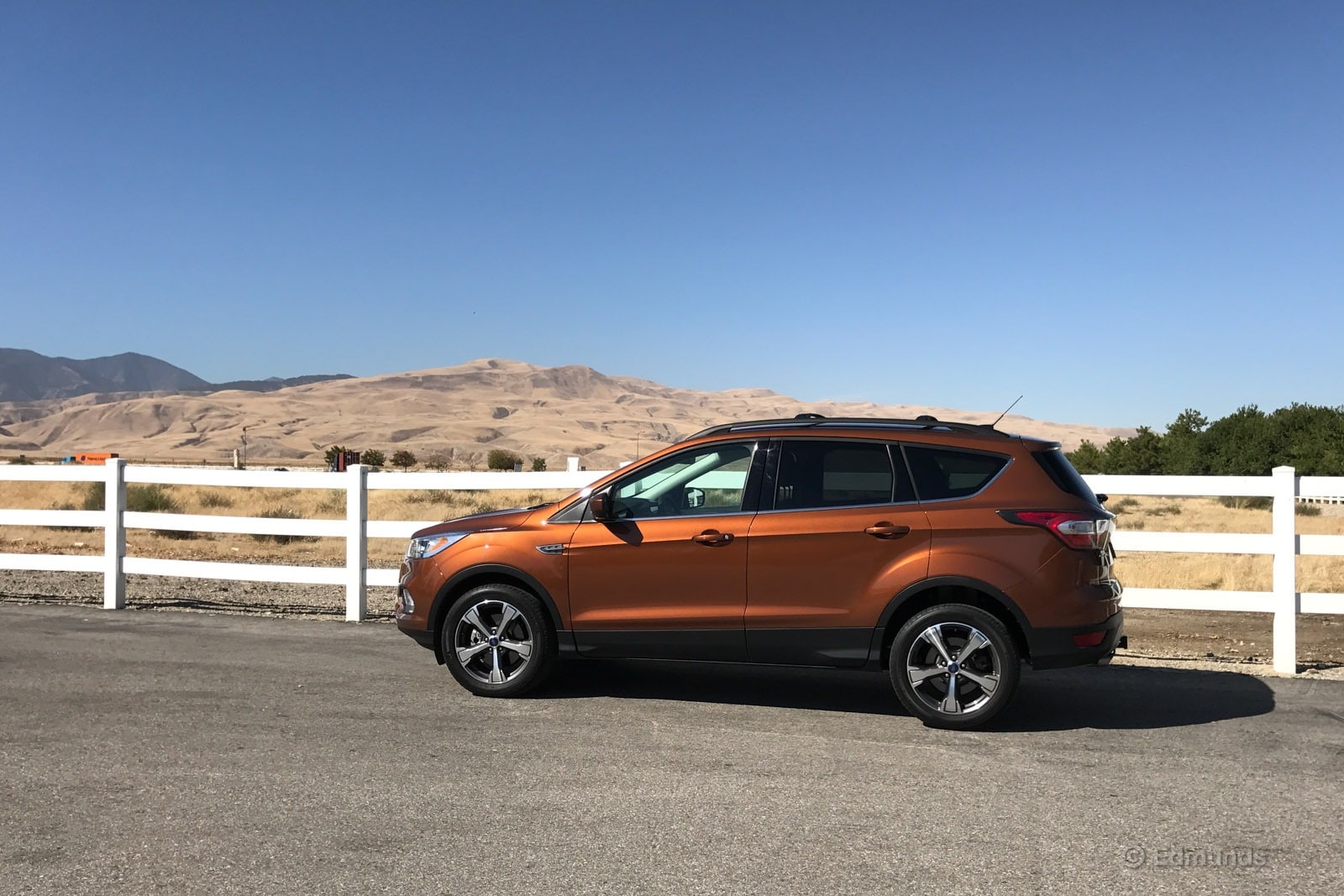
Monthly Update for October 2017
Where Did We Drive It?
In October, our metallic pumpkin-spice 2017 Ford Escape handled the scariest of all duties: commuting around Los Angeles. Then it went to its final destination, CarMax. No Edmunds long-termer can escape its fate, no matter how suggestive its badge. We'll have a full rundown of that experience and a retrospective on our time with the Escape in a separate post. In the meantime, we'll treat October like any other month, and go ahead with some comments and observations.
What Kind of Fuel Economy Did It Get?
We only drove the Escape about 780 miles in October since it was listed for sale part of that time. In that time we averaged about 18.5 mpg, which is below our lifetime average. But that's what L.A. traffic does to fuel economy.
This poor showing dragged our lifetime average down by a tenth, to 20.6 mpg. That's noticeably short of the EPA-estimated 23 mpg.
Average lifetime mpg: 20.6 mpg
EPA mpg rating: 23 combined (20 city/27 highway)
Best-fill mpg: 32 mpg
Best range: 408.3 miles
Current odometer: 22,275 miles
Maintenance and Upkeep
None.
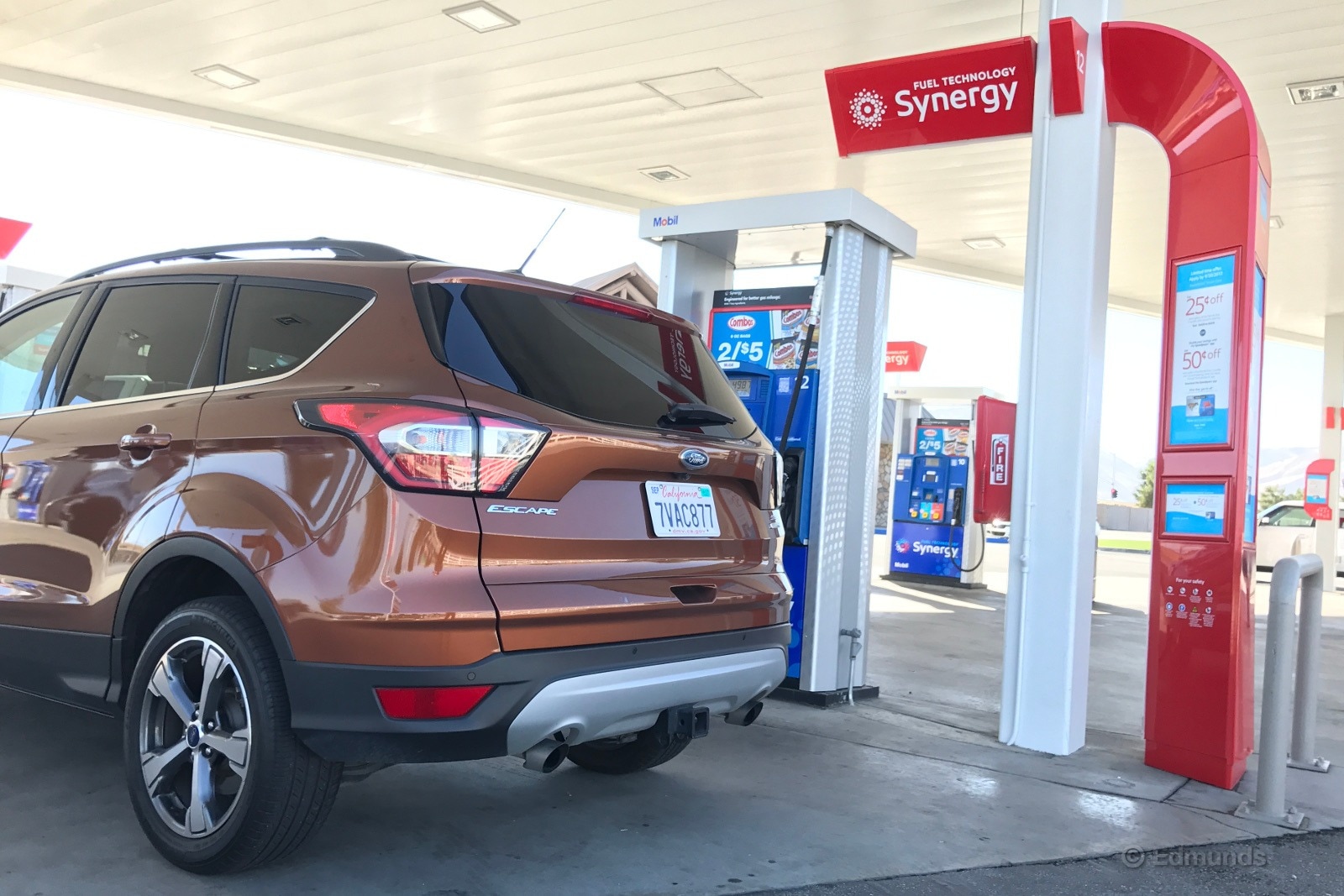
Logbook Highlights
Performance
"I spent a good portion of the weekend impressed by how much gusto our Escape delivers off the line. But I started thinking it may be a trick. I accidentally shifted to Neutral while making a three-point turn and applied the gas pedal as I normally would. The engine revved up dramatically, more so than you'd expect.
"This behavior makes me think Ford is using a super-sharp throttle calibration, meaning that when you apply 15 percent gas pedal, the engine may receive a signal for significantly more (30 percent? 50 percent?). This would make the engine feel more powerful than it is, which is exactly how I'd describe the Escape before my three-point-turn experience. If true, it's a clever trick, but a trick nonetheless. It might also explain our less than stellar real-world fuel economy." — Carlos Lago, senior writer
Interior
"Our Escape has dual-zone climate controls but doesn't have an obvious button to lock them in step with one another, so you only have to turn the driver's knob to adjust both. Pretty much every vehicle I've been in with multiclimate settings has some form of a 'dual' button, except for our Escape. So how do you do it? It perplexed me, literally a professional car reviewer, but not my girlfriend, who simply pressed and held the 'auto' button. That did it. Strange." — Carlos Lago
"The Escape's interior feels large, but something about the design rubs me the wrong way. It could be the materials, especially the cheap-looking and cheap-feeling stuff around the steering wheel. It might also be the squeaks and rattles I've heard emanating from the center console. Either way, there's this rental car sensation I can't quite shake." — Carlos Lago
"I can definitely put my finger on one of the interior design choices that bothers me: the expansive dash. I don't think it's any bigger than the dash in our CR-V, but it lacks the contours and other design elements that would break it up visually. I wind up very aware that I'm looking out at the world over a slab of hard plastic that's big enough for me to sleep on." — Will Kaufman, associate staff writer
Technology-Audio
"Ford's Sync 3 entertainment system remains the best in this segment that I've experienced. It boots quickly and connects to Android Auto without any serious glitches. It's as smooth as the advertised experience. My only complaint is that it defaults to radio when you don't have your phone plugged in, so the stereo can surprise you with loud volume during startup." — Carlos Lago
"The Escape is one of the few vehicles in our long-term fleet that regularly drops the satellite radio connection, which really kills the mood of my commuting karaoke sessions." — Carlos Lago
"Just like Brent did last month, I managed to lock us out of the Escape in October. We were using it as a shuttle to get around the track, so when I parked it temporarily I turned off the engine but left the key in the ignition. Then I hopped out of the car and the door locked behind me. I have no idea how that happened; the door was unlocked for me to exit, and I didn't press the lock button on my way out. At least one person claims that's a feature, but I didn't test it.
"I did learn that we still don't know what the numerical code is for the door. That's two locksmiths in as many months for the Escape." — Will Kaufman
Miscellaneous
"Our Escape had reached the end of its tenure with us and it was time to pay a visit to CarMax. I went on a rainy morning and in about 20 minutes I was presented with an offer of $18,000. This was within a hundred dollars of Edmunds trade-in TMV, so we decided to take the offer. I came back with the necessary paperwork a couple days later and bid farewell to the Escape." — Ron Montoya, senior consumer advice editor
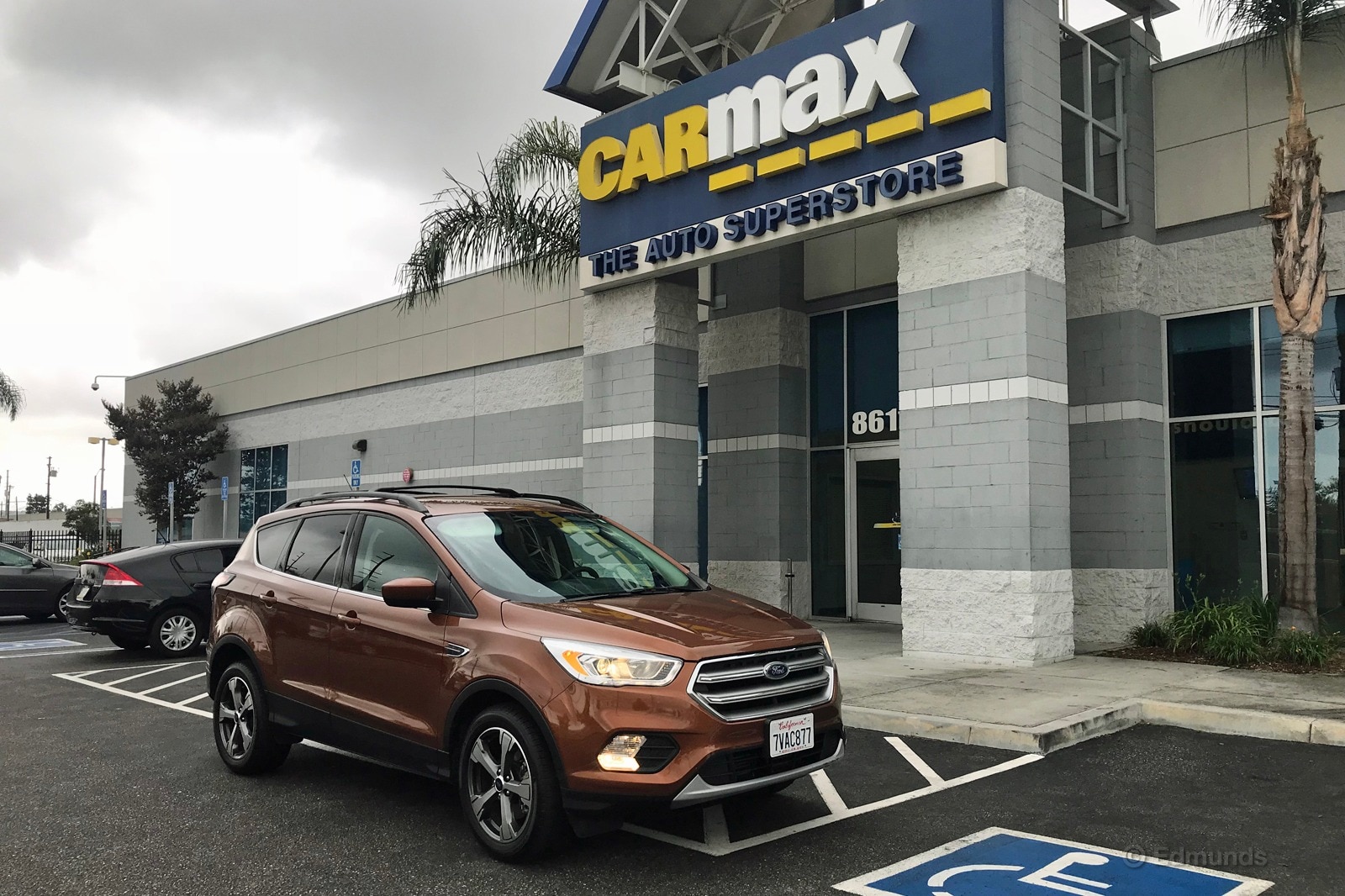
Wrap-Up
What We Got
Compact crossovers have eclipsed sedans in popularity with an appealing combination of versatility and practicality. That trend was enough to interest us in the 2017 Ford Escape. With its new exterior styling, updated smartphone connectivity and a new 2.0-liter turbocharged four-cylinder engine, the updated Escape made us pull out our checkbook and buy one for a yearlong test.
Of the three available trim levels (S, SE and Titanium), we opted for the midlevel Escape SE. Getting the SE meant we could upgrade to the 2.0-liter turbocharged four-cylinder engine as well as opt for the SE Technology package, which included Ford's newest Sync system.
The base MSRP for our Escape SE was $26,850, but after adding the upgraded engine, Technology package and a few other small options, the MSRP climbed to $32,950. We negotiated and took advantage of an available purchase incentive, which brought the price down to $29,646 before tax and title. Then we got to driving. Here are some highlights from our year of testing the 2017 Ford Escape.
Performance
"Light steering and a small turning circle give the Escape great maneuverability. Generally speaking, this is one of the easiest cars to drive in our test garage. With its fold-flat second-row seat and boxy interior shape, it is also one of the most versatile." — Mike Schmidt, senior manager, vehicle testing
"I wouldn't go as far as to say you have to get the updated 2.0-liter engine in the Escape, but if it were my decision I would pay up for the privilege. I say privilege because this engine is incredibly smooth and powerful for a vehicle in this class. It makes getting on the highway a breeze, and the occasional pass around a slow-moving truck barely takes a modest squeeze of the pedal. It's a feeling you don't often get with many of the four-cylinder engines found in the Escape's competitors." — Ed Hellwig, senior editor
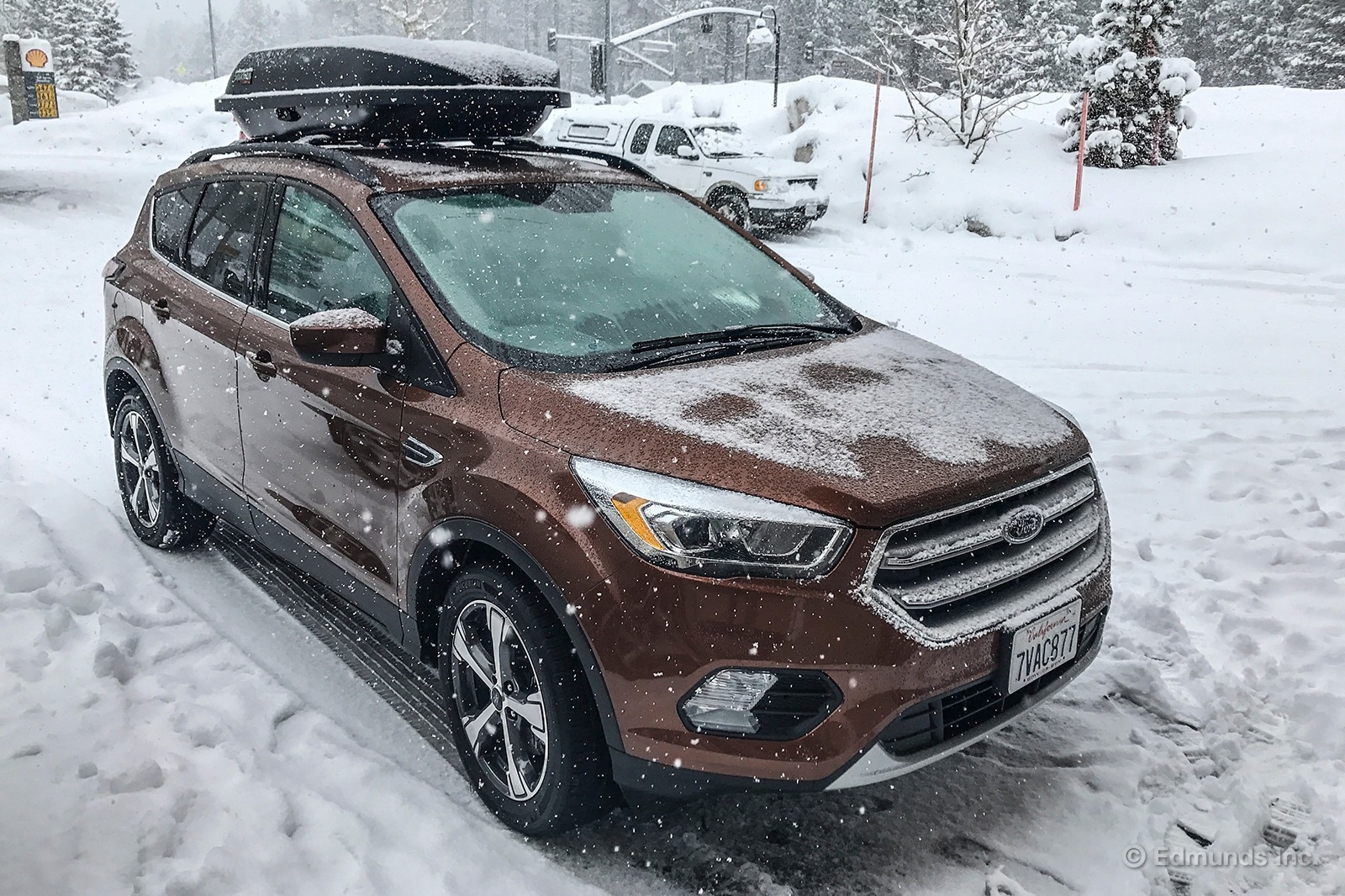
"Having tested the turbo 1.5-liter-powered Escape just this past week, I really appreciate the difference just a half-liter makes. The smaller engine car weighed in at 3,620 pounds, roughly 200 pounds lighter than our long-term car due in part to its front-wheel-drive layout, but was 2.5 seconds slower getting to 60 mph. On top of this, the 1.5-liter car is only rated 1 mpg better across the board. I'll gladly make that trade for the 2.0-liter's juice." — Jonathan Elfalan, road test manager
MPG
"To the surprise of nobody, our Escape got mediocre fuel economy in September, averaging 19.6 mpg. As Dan Edmunds wrote in our June update, it is possible to get high fuel economy. But the long-term trend for the Escape and its energetic turbocharged engine has definitely been subpar." — Brent Romans, senior editor

"During the month of August, we turned the fewest miles and the lowest average fuel economy since taking ownership of our 2017 Ford Escape. With commuting making up the majority of the 322-mile month, our Escape returned a disappointingly low 17.4 mpg average. This was enough to drop our lifetime economy by a tenth of an mpg — no big deal — right as we clicked over our 20,000-mile target." — Jonathan Elfalan
Comfort
"These seats are excellent. Initial comfort is good, bolstering is respectable for a vehicle in this class, and I love the material. Everyone is pushing faux leather into the market that looks good but doesn't feel nearly as nice. It's so refreshing to have a quality cloth seat to sit on." — Travis Langness, automotive editor

"The Escape is a pleasant-riding machine that soaks up rough roads cleanly and doesn't jostle the occupants. And it does this without being overly floaty and buoyant. Ford seems to have found the sweet spot." — Dan Edmunds, director of vehicle testing
Cargo Space
"I can see why compact SUVs are becoming the go-to vehicle for families. Our Escape has all the space you need 90 percent of the time. Whether you're hauling people or cargo, it has just enough room to squeeze it all in. Plus, when you're running errands and navigating parking lots, its smaller size makes it far easier to maneuver into tight spots and around sharp turns. As nice as it is to have a third row sometimes, the larger dimensions that come along with it can be a pain." — Ed Hellwig

"I had doubts that our newly purchased bathtub would fit into the Escape. There wasn't a lot of wiggle room front to back or side to side. But I needed only drop the second-row seat flat and slide it in." — Mike Schmidt
Interior
"The Escape's interior feels large, but something about the design rubs me the wrong way. It could be the materials, especially the cheap-looking and cheap-feeling stuff around the steering wheel. It might also be the squeaks and rattles I've heard emanating from the center console. Either way, there's this rental car sensation I can't quite shake." — Carlos Lago, senior writer

"Before I go all Debbie Downer on the Escape, let's be clear. I like the Escape. In fact, I like it a lot. That's why the tiny fails I noticed — the kind of interior fit and finish blunders that made me literally blurt out 'Oh come on!' — bother me so much. Not because the mistakes are big or gross, or that they take away from performance or functionality. But when you miss something that is in the driver's line of sight, it shows a lack of attention to detail. It's like being served a drink at a restaurant in a glass that has lipstick on it. I owned a Ford Edge a few years ago and dug it. I felt confident it was made well. Small details like these misses don't inspire the same confidence." — Matt Jones, senior consumer advice editor
Audio and Technology
"Sync 3 might be great overall, but the satellite radio streaming quality is garbage. I like audiophile quality. I can't afford it, but I like it. And I can tolerate a wide range of sound quality, but not the overcompressed warble that comes through the Escape's speakers when listening to SiriusXM. The sibilance on vocals, the phasing cymbals — it's bad. Like Napster-circa-2000-96-kbps bad. Satellite radio inherently has these bandwidth/compression issues, but the radio receivers in most of our other long-term cars sound decent. The Escape stands out as awful." — Dan Frio, staff writer
"I love listening to music from my personal library, and I don't have an unlimited data plan on my phone. These reasons are why I break out my old-school, final-generation iPod Classic when I get tired of satellite radio and podcasts. Sync 3 seems to hate indexing my iPod library. Between the Lincoln Continental and the Escape, I usually have to go through several iPod resets and vehicle on-off cycles before I can select music through the touchscreen. With our long-term Chevy Volt, I just plug in the iPod and my music is accessible about 30 seconds later." — Cameron Rogers, staff writer
Maintenance
"A couple guys from our video team drove our Escape to Las Vegas and back for a conference in May. On their return trip, a kicked-up rock hit the windshield and left a small crack. Over the next few days, the crack grew. So Vehicle Testing Assistant Michael Massey made an appointment to have the windshield replaced with Safelite. The total cost was $482.06. It took the technicians about an hour to complete." — Brent Romans
"We started up our Ford Escape after it had been parked for a couple days to find a TPMS warning light. After a quick inspection, we found a screw in the rear passenger-side tire. Our late-afternoon discovery necessitated a trip to a local Just Tires shop because of its late closing time. The cost was about 30 minutes of our time and 34.73 of our dollars." — Michael Massey, vehicle testing assistant
Miscellaneous
"I'm gonna keep beating this drum with current Ford products: There's just not enough driving range for comfort in these cars. I pulled into a gas station today with 257 miles on the Escape's trip meter and an indicated zero — zero! — miles to empty. The computer said I was averaging 18.7 mpg, which is pretty typical for this powerful rig. So we're talking about a real-world range of 250 miles in mixed driving, give or take. Our old Mustang GT had similar issues, as does our current Lincoln Continental. Sure, you can plan around it, but 250 miles? A Chevy Bolt can do that! I'd like to see Ford's gas tanks grow by a few gallons to make 300 miles between fills a distinct possibility. Feels like we're getting shortchanged as things stand." — Josh Sadlier, senior manager, content strategy
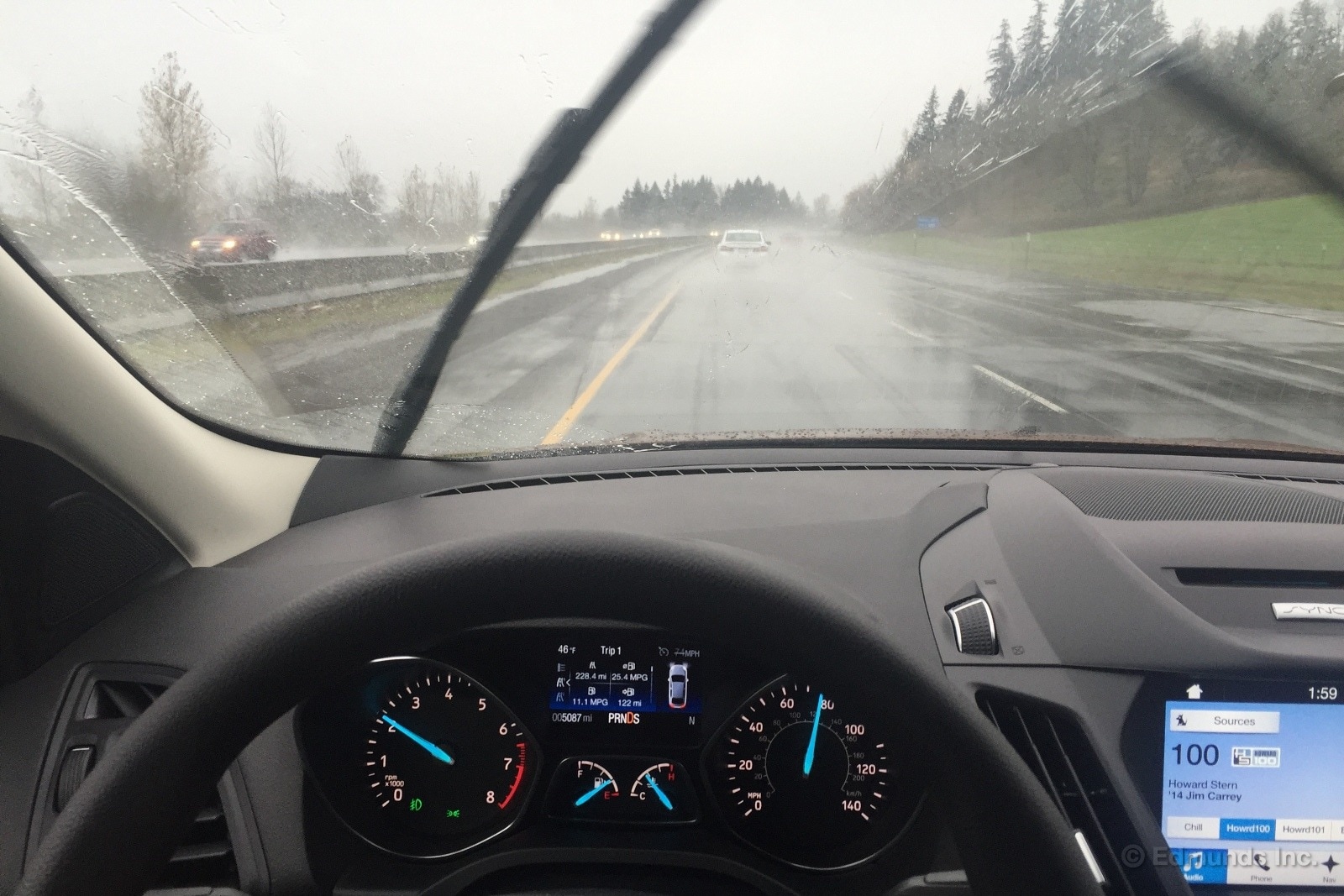
Maintenance & Repairs
Regular Maintenance:
During our test, the Escape had two regular services: one at 10,000 miles and a second at 20,000 miles. Both services were performed by local dealers, and each included an oil change and tire rotation. The first service cost $61.27, and the second service cost $44.75. The two services were performed at different dealerships, which likely explains the difference in cost. A wayward pebble sent us running to Safelite for a replacement windshield, which cost $482.06.
Service Campaigns:
No recalls were issued during our test.
Fuel Economy and Resale Value
Observed Fuel Economy:
EPA-estimated fuel economy for our 2.0-liter turbocharged, all-wheel-drive Escape is 23 mpg combined (20 city/27 highway). After 22,275 miles, we averaged 20.6 mpg. Our most fuel-efficient tank was 32 mpg, and our best range between fill-ups was 408.3 miles.
Resale and Depreciation:
Our Escape had an MSRP of $32,950, including destination. We paid $29,646 before tax. After one year and 22,275 miles, the Edmunds TMV Calculator valued the compact crossover at $17,895 based on a private-party sale. We sold the car to CarMax for $18,000. This reflected 39 percent depreciation. To put that in context, our long-term 2014 Nissan Rogue depreciated by 29 percent and our long-term 2012 Honda CR-V lost just 18 percent of its value.
Summing Up
Pros:
The impressive 2.0-liter turbocharged engine and a well-sorted chassis made the Escape fun to drive, especially around curving roads. The smooth highway ride and comfortable seats also made the Escape very road-trip-friendly.
Cons:
Middling fuel economy and a relatively small gas tank had us spending a lot of time at the pump. The Escape's disappointing cabin materials and an infotainment system prone to glitches left something to be desired. The resale value at the end of one year was significantly lower than that of competitors.
Bottom Line:
While we enjoyed driving our Escape and it proved itself a versatile crossover, we encountered a lot of small issues over the year we owned it. Creaks and squeaks, complaints about cabin materials, and massive depreciation at the end of the test stuck in our memory the most. The Escape is a respectable compact crossover, but it definitely isn't a class leader.
| Total Body Repair Costs: | $482.06 (windshield replacement) |
| Total Routine Maintenance Costs: | $106.02 (over 12 months) |
| Additional Maintenance Costs: | None |
| Warranty Repairs: | None |
| Non-Warranty Repairs: | None |
| Scheduled Dealer Visits: | 2 |
| Unscheduled Dealer Visits: | None |
| Days Out of Service: | None |
| Breakdowns Stranding Driver: | None |
| Best Fuel Economy: | 32.0 mpg |
| Worst Fuel Economy: | 12.6 mpg |
| Average Fuel Economy: | 20.6 mpg |
| Best Range: | 408.3 miles |
| True Market Value at Service End: | $17,895 (private-party sale) |
| What It Sold For: | $18,000 |
| Depreciation: | $11,646 (39% of paid price) |
| Final Odometer Reading: | 22,275 miles |
Edmunds purchased this vehicle for the purposes of evaluation.
